Best running headphones 2025: stay in the zone with these sweatproof picks
Experience your runs like never before with the best running headphones, offering unbeatable sound, secure fits, and sweatproof designs to keep you moving to the beat

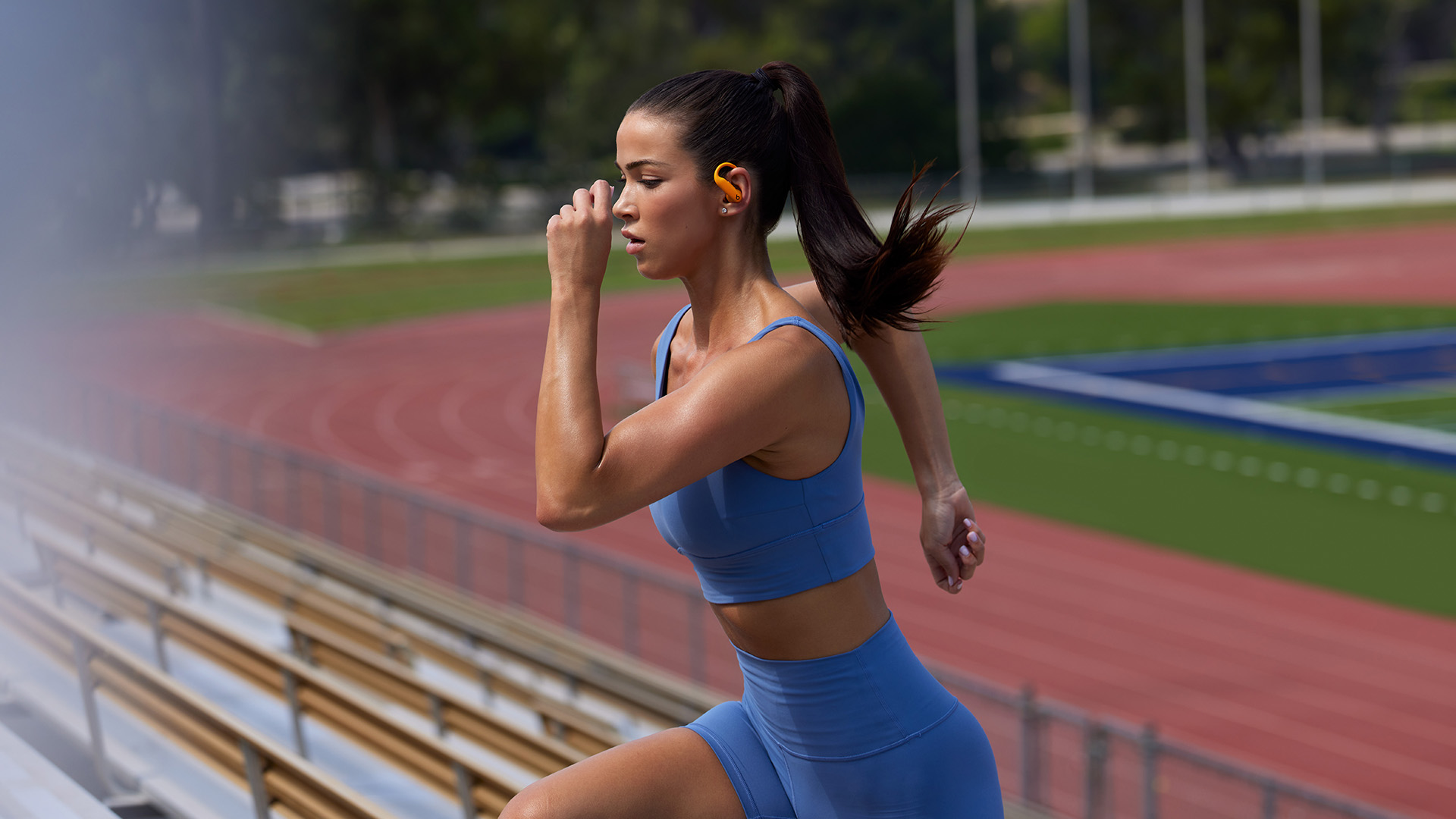
Looking for the ultimate workout companions? I've been testing and reviewing all the major workout headphones from the last 5+ years, and the ones below are my favourites. From Bose and Shokz to Beats and LG and more, these are the buds you can trust in the gym and on the track.
The running and workout headphones I selected for this roundup boast sweatproof and durable designs, long-lasting battery life, quick charging capabilities, and a snug fit that keeps them in place no matter how fast you pound the pavement. Plus, they come loaded with extras like active noise cancelling, customisable sound profiles, and even cases that fight off bacteria.
If you're in the market for new fitness wearables, I'd recommend checking out T3's best running watch guide, also curated by yours truly. Or, if you're looking for audio equipment for general use, why not visit our best headphones guide?
Our top running headphones right now are Beats' latest Powerbeats Pro 2. With added ANC and Transparency modes and sublime audio quality, these headphones are the ones to beat right now. If you're looking for spatial awareness, try the Bose Ultra Open Earbuds. Need top-tier sound? The Sennheiser Momentum Sport is your best bet.
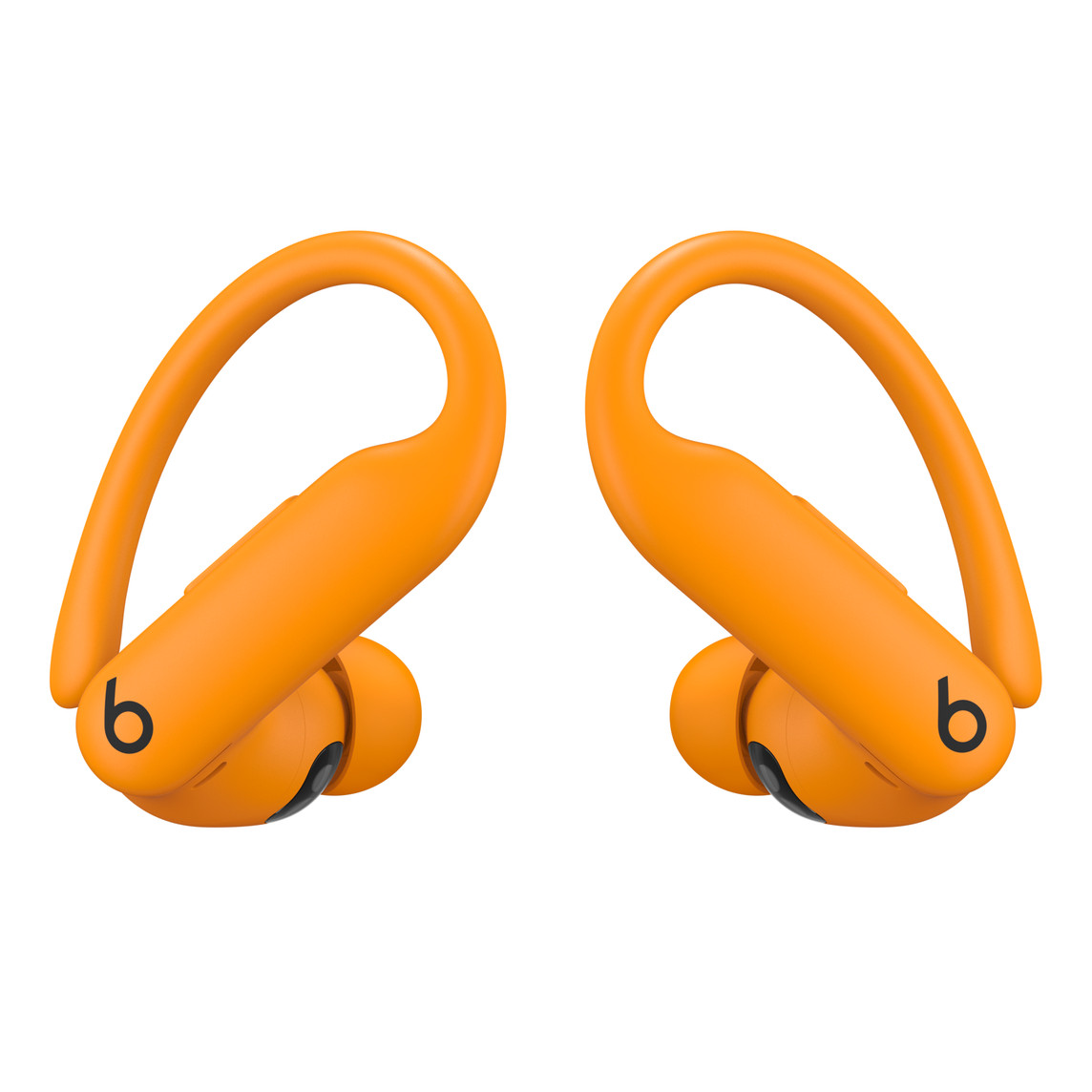
The Beats Powerbeats Pro 2 deliver rock-solid stability, punchy sound, and smart workout features. With a secure earhook design, Active Noise Cancellation, and a built-in heart rate sensor, they’re built for serious training. 9-hour battery life (45 with case) and Qi wireless charging seal the deal for top-tier running headphones.
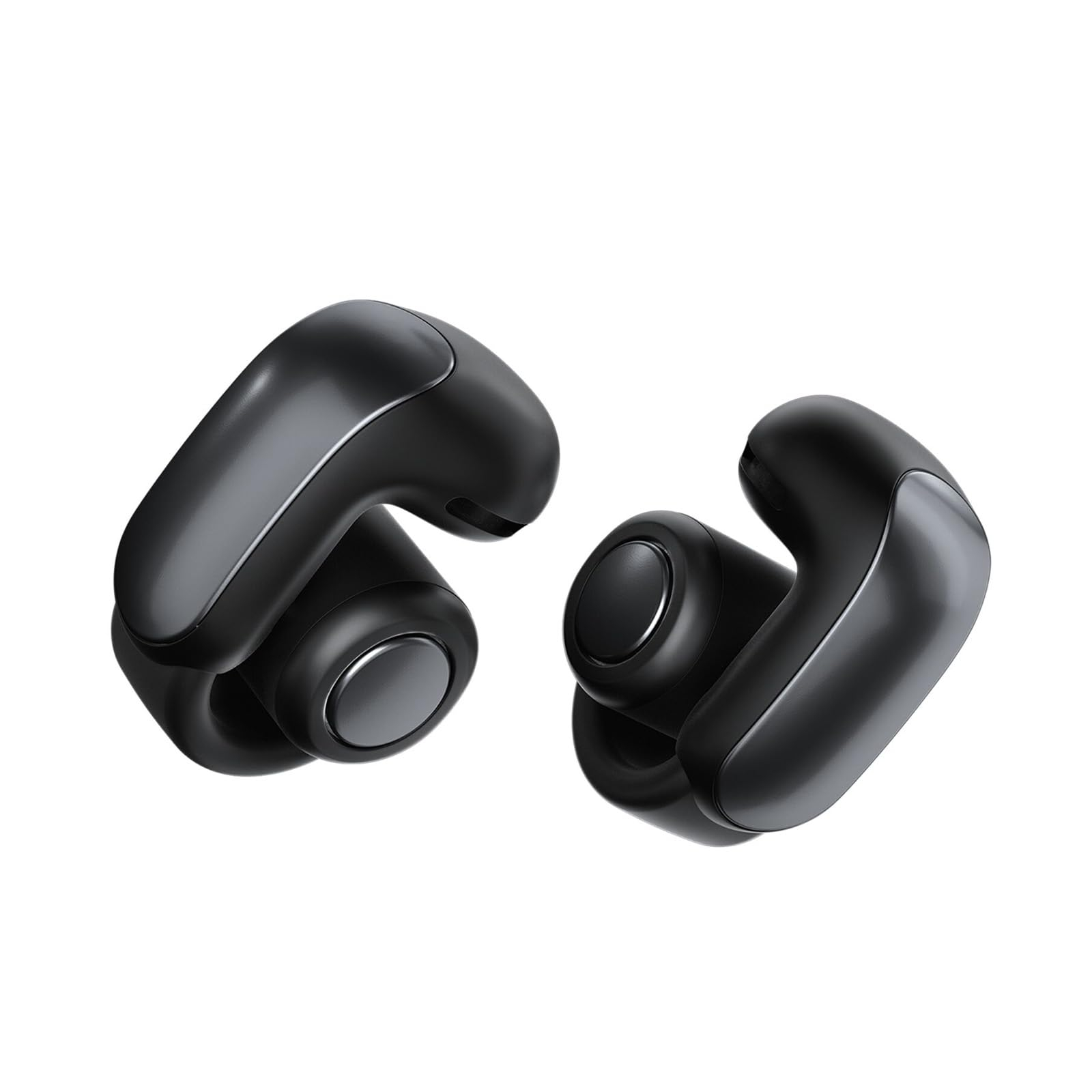
The Bose Ultra Open Earbuds excel in comfort and design, offering a unique open-ear experience that keeps you aware of your surroundings. Battery life could be longer, but they just feel so comfortable!
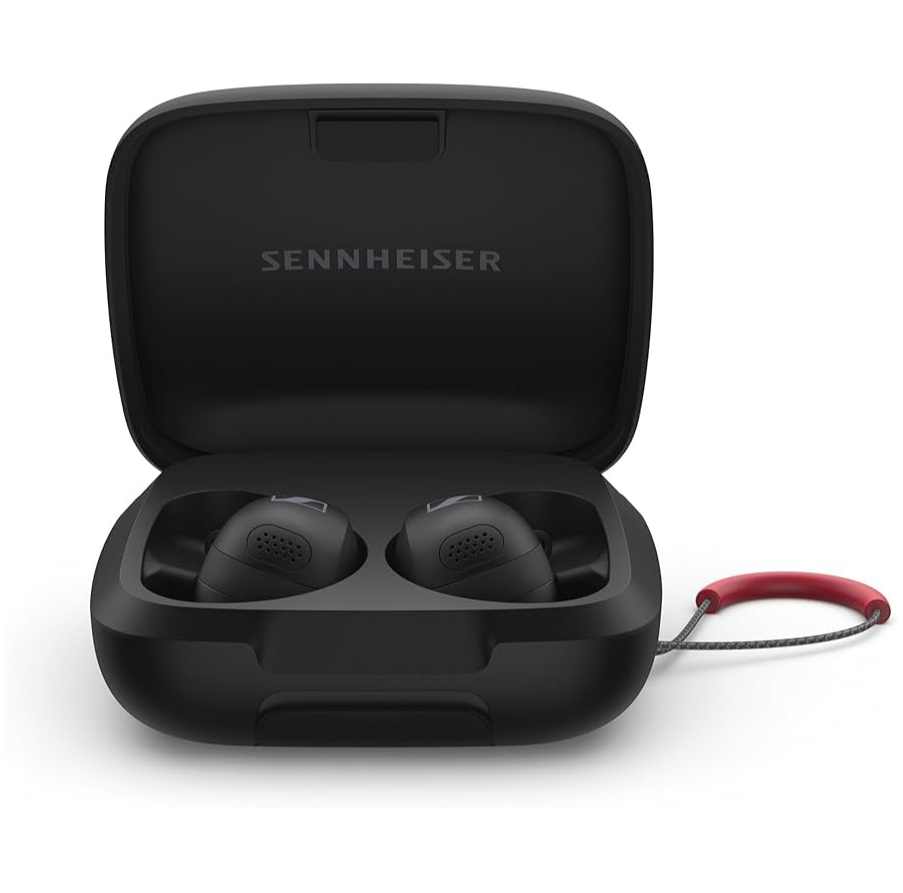
The Sennheiser Momentum Sport earbuds offer a balanced mix of high-quality sound, a secure fit, and water resistance, making them a strong choice for active users. However, the heart rate and temperature tracking feel almost pointless.
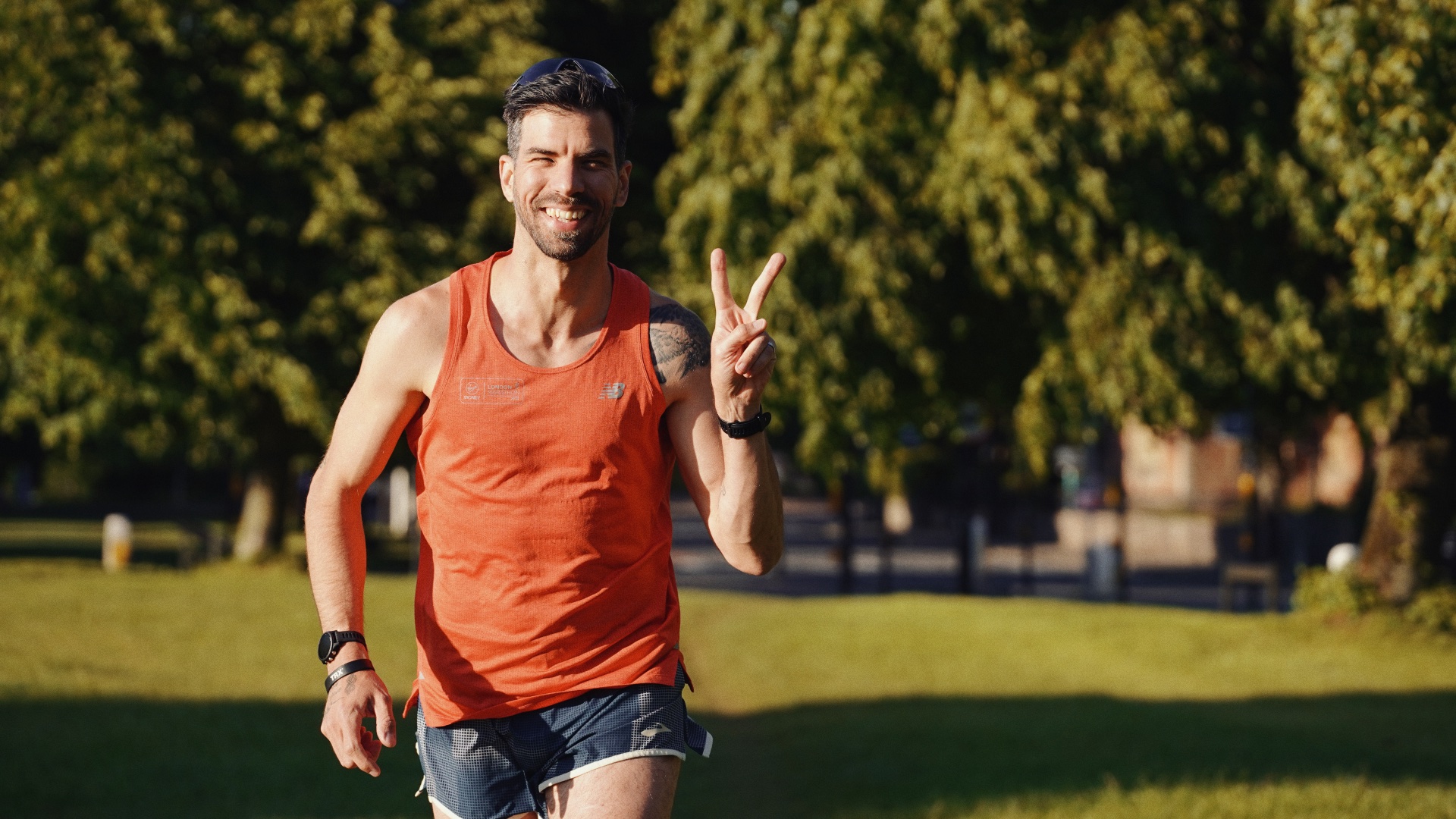
Although there are plenty of runners at T3, Matt is the magazine’s "official" runner, with races ranging from 5Ks to ultramarathons under his belt. He tested the majority of the workout buds in this guide, alongside some of the best freelance writers in the fitness space.
Best running headphones to buy right now
Best overall
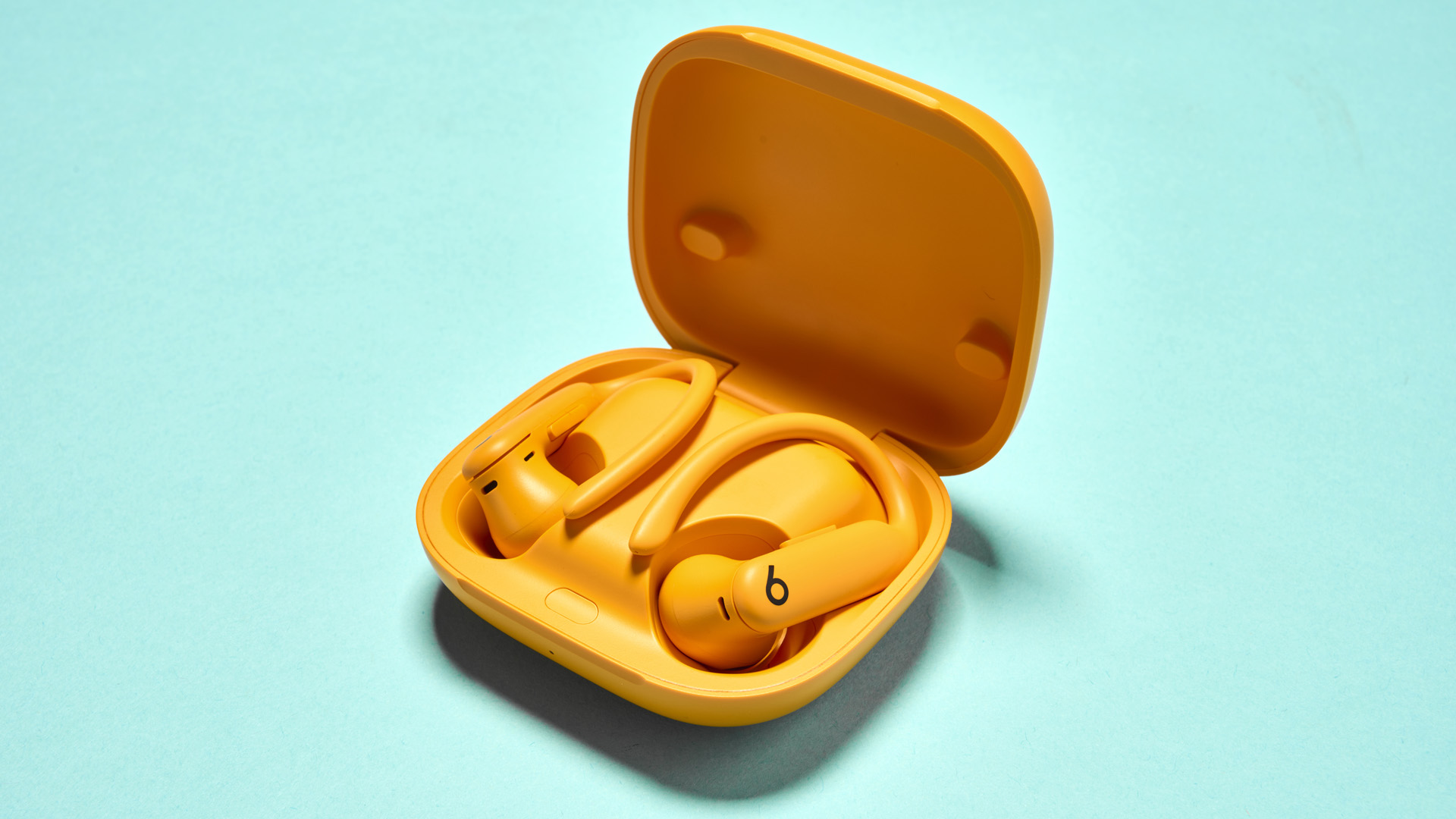
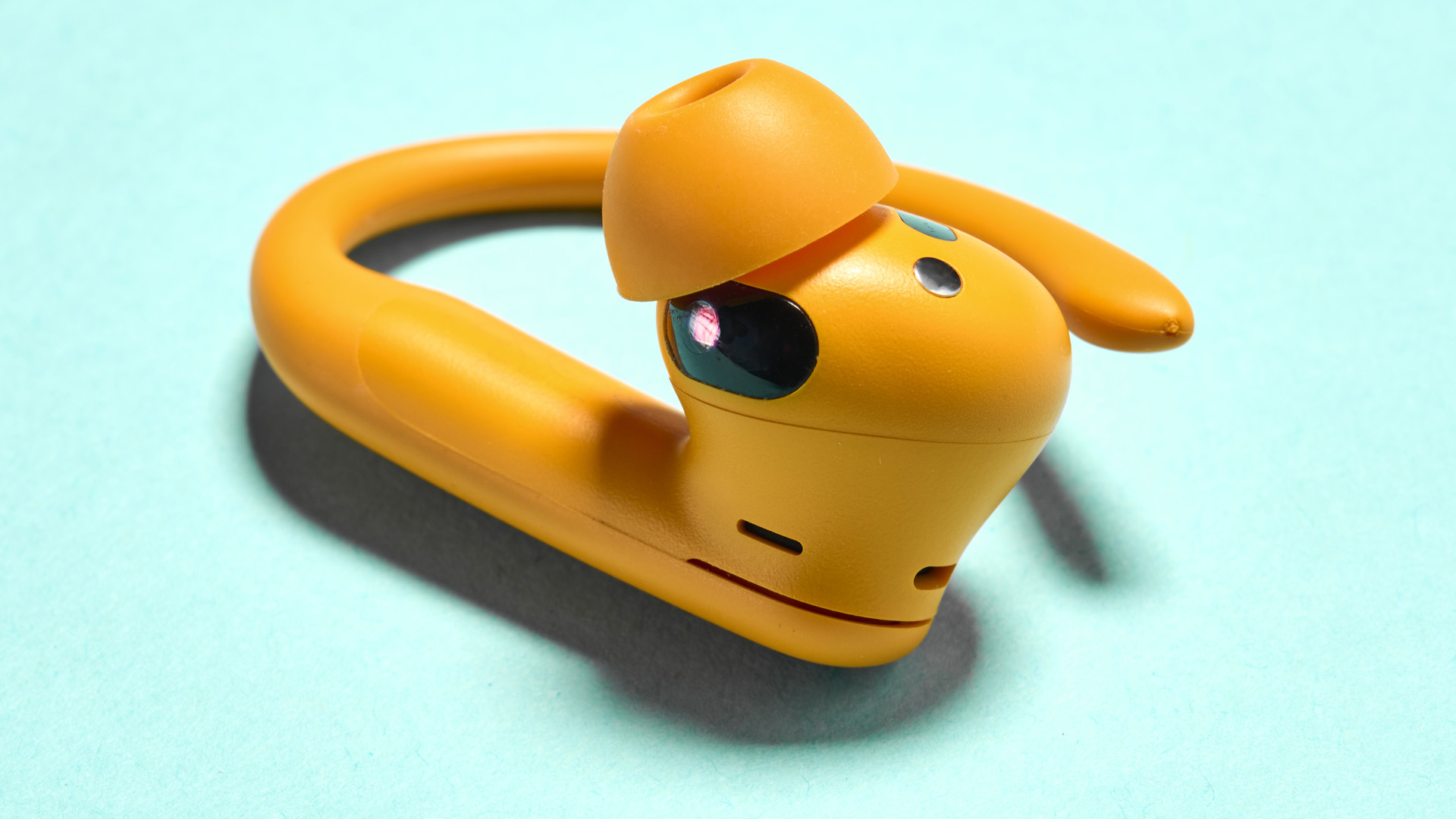
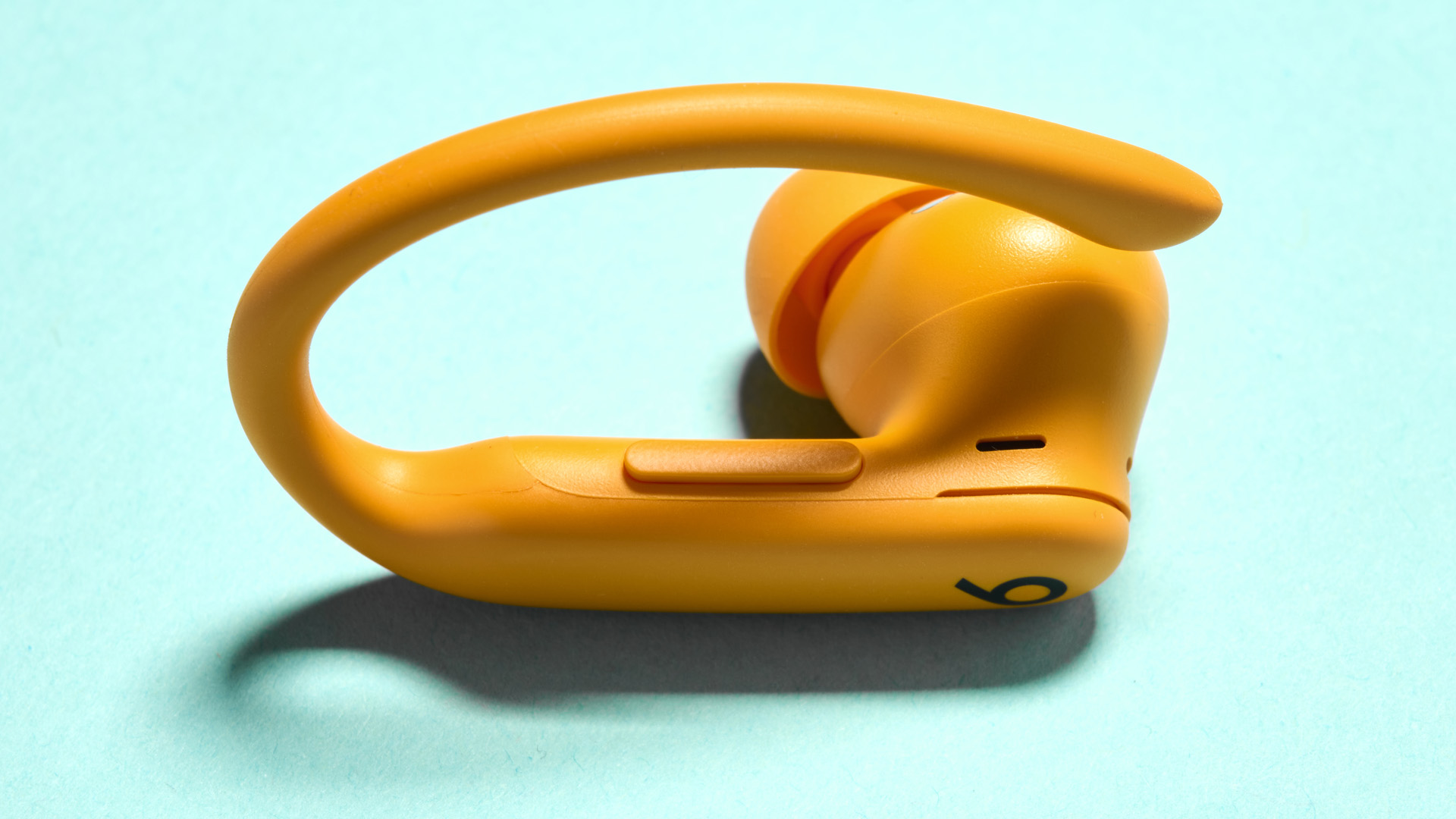
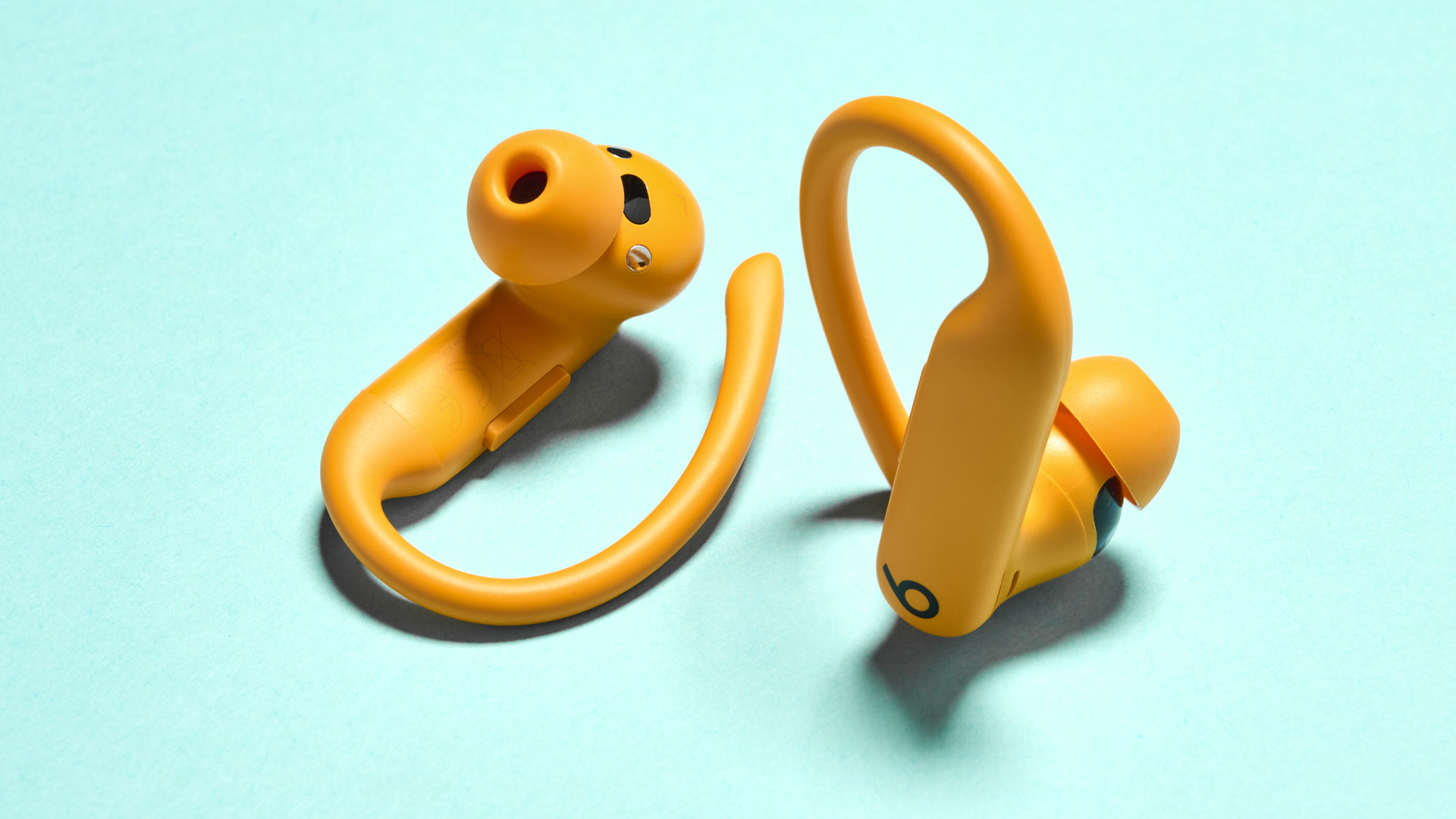
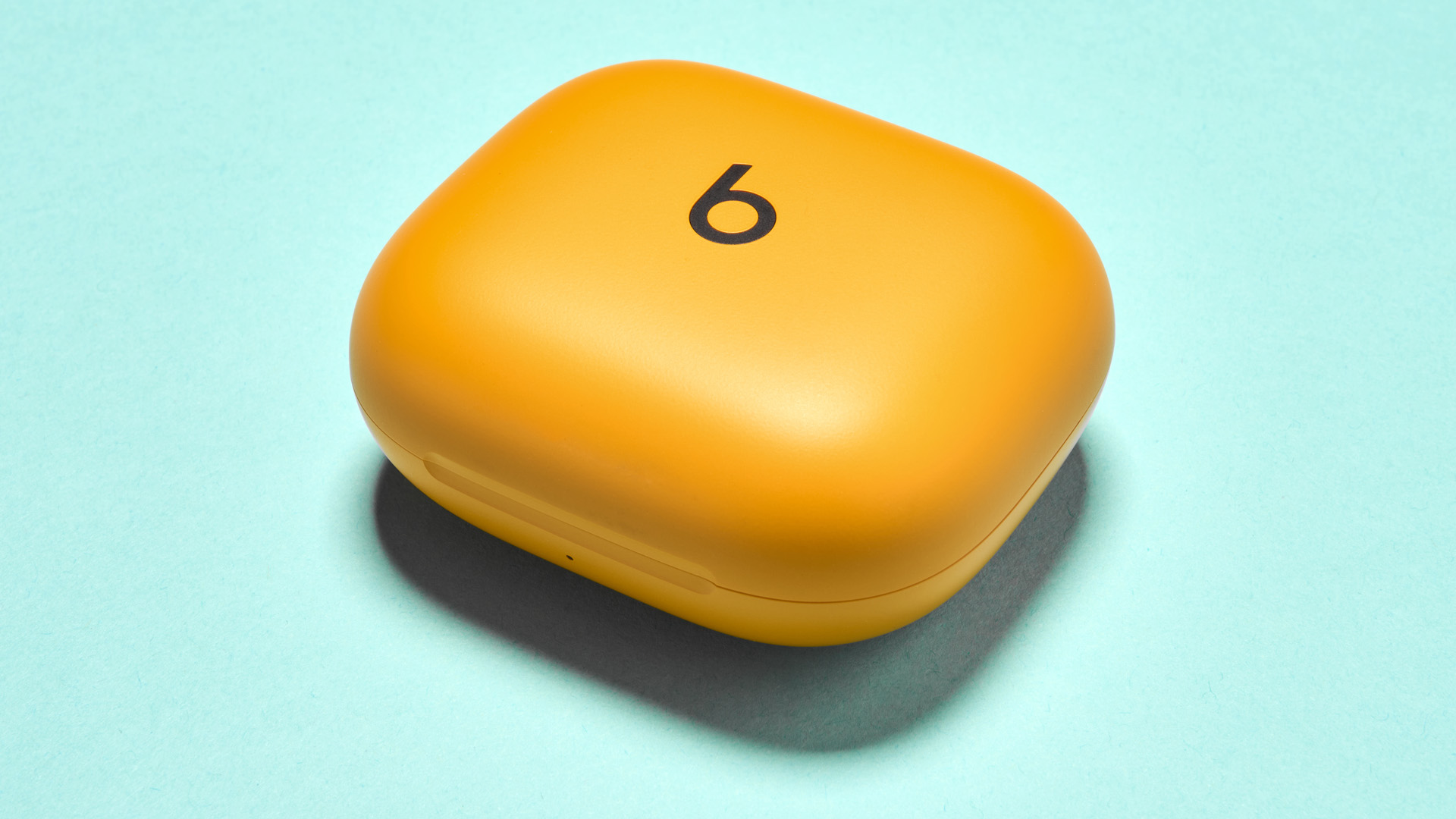
Specifications
Reasons to buy
Reasons to avoid
The Beats Powerbeats Pro 2 are hands down the best running headphones I’ve tested, and they’ve earned their top spot on this list. With a redesigned earhook and a snug, stay-put fit, they feel completely secure – even on high-intensity sprints and long-distance runs. I never had to adjust them mid-workout, which is a win in itself.
Beats has nailed the balance between punchy, bass-driven sound and workout-friendly clarity. The addition of Active Noise Cancellation (ANC) is a huge upgrade, cutting out gym clatter and wind noise, while Transparency mode lets me stay aware of my surroundings when running outdoors. The new heart rate sensor is a nice touch, offering extra fitness tracking without needing a watch.
Battery life is phenomenal. I got up to (approx.) 9 hours on a single charge with ANC off, and the case extends it to a whopping 45 hours – perfect for back-to-back training sessions. The sweat-resistant build held up even on my toughest workouts, too, which is excellent.
For runners and gym-goers who want killer sound, a rock-solid fit, and smart features, the Powerbeats Pro 2 are the ultimate workout headphones. They’re not cheap, but they deliver where it matters most.
Read my full Beats Powerbeats Pro 2 review.
Best fit
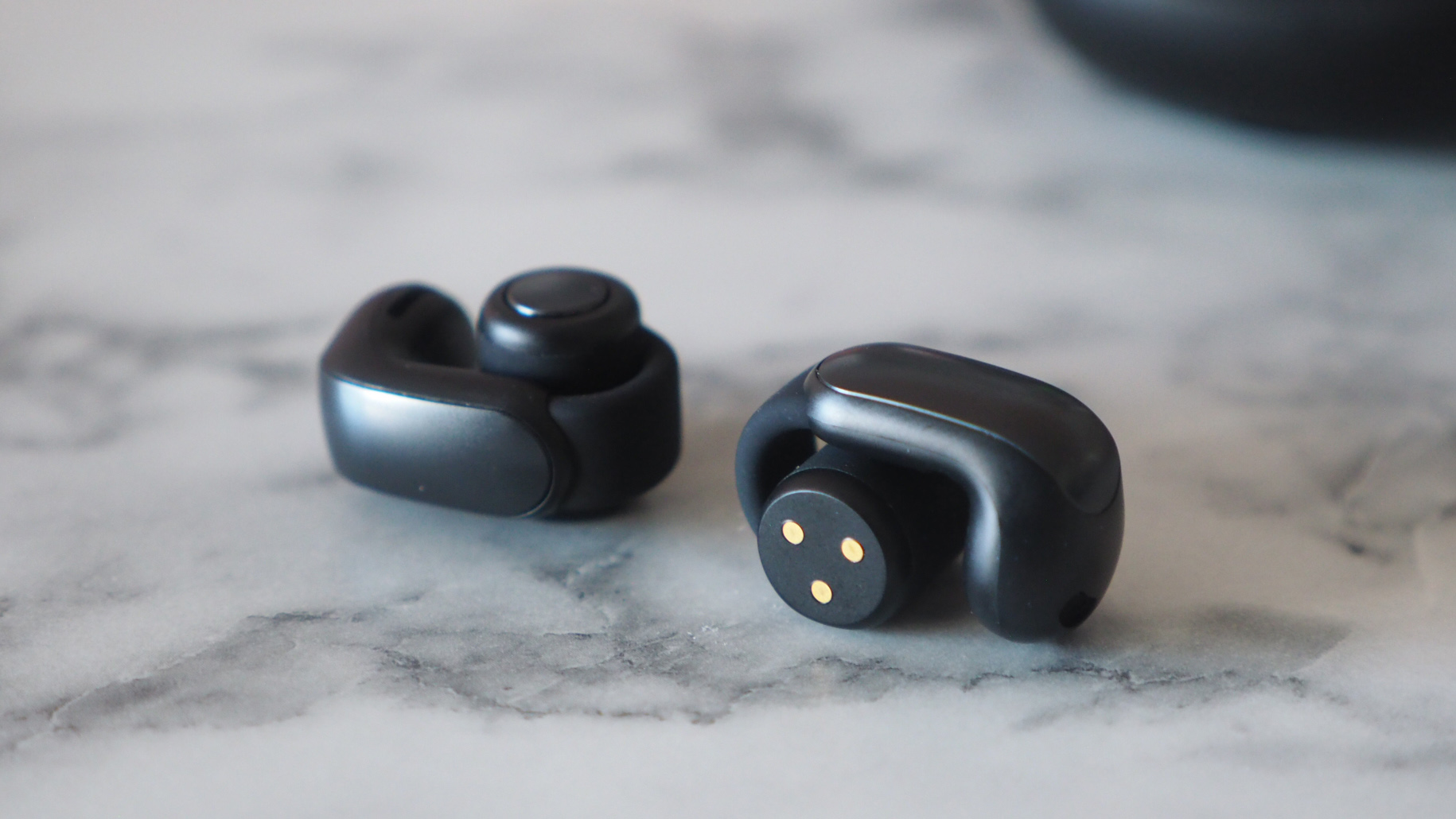
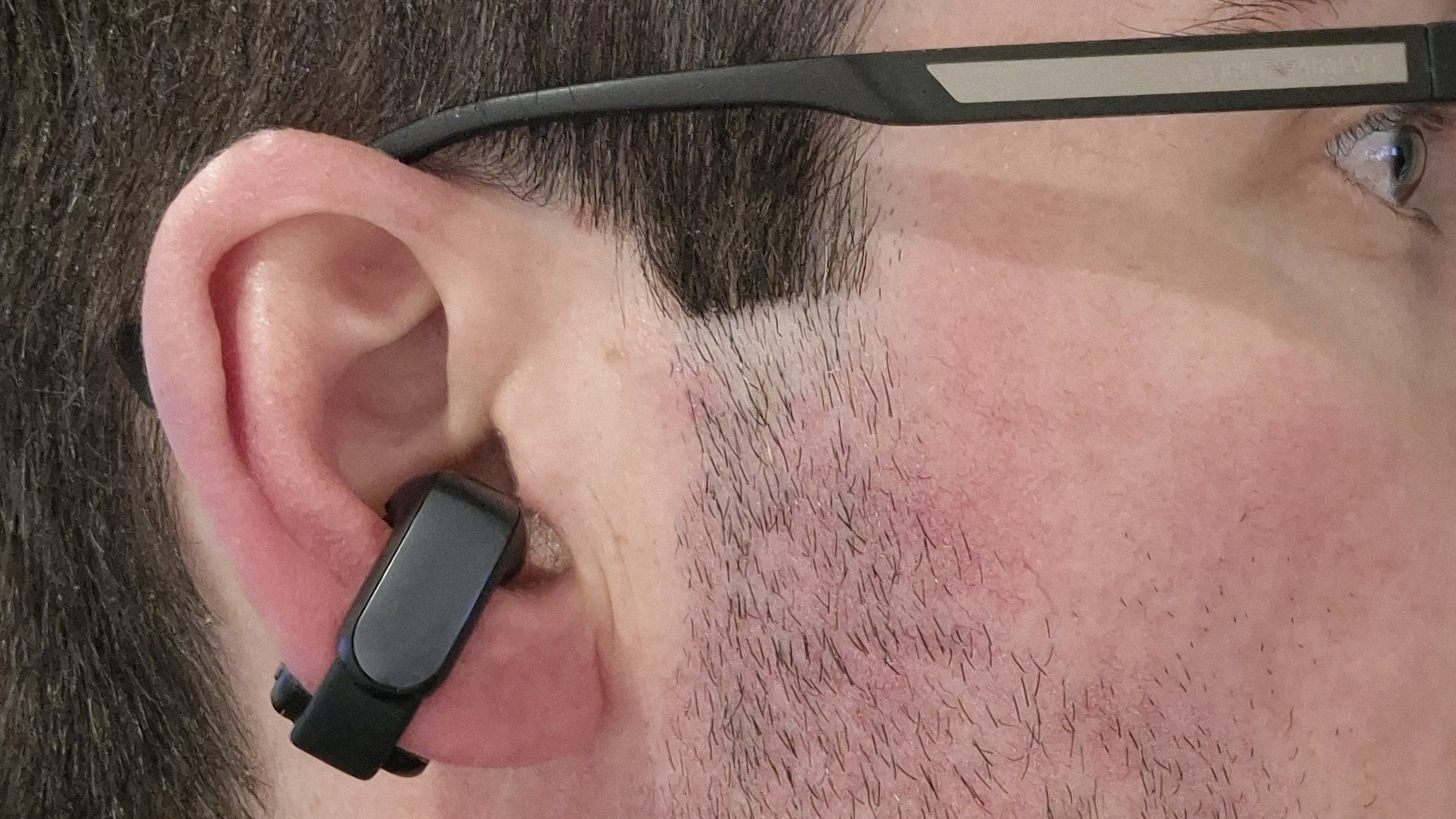
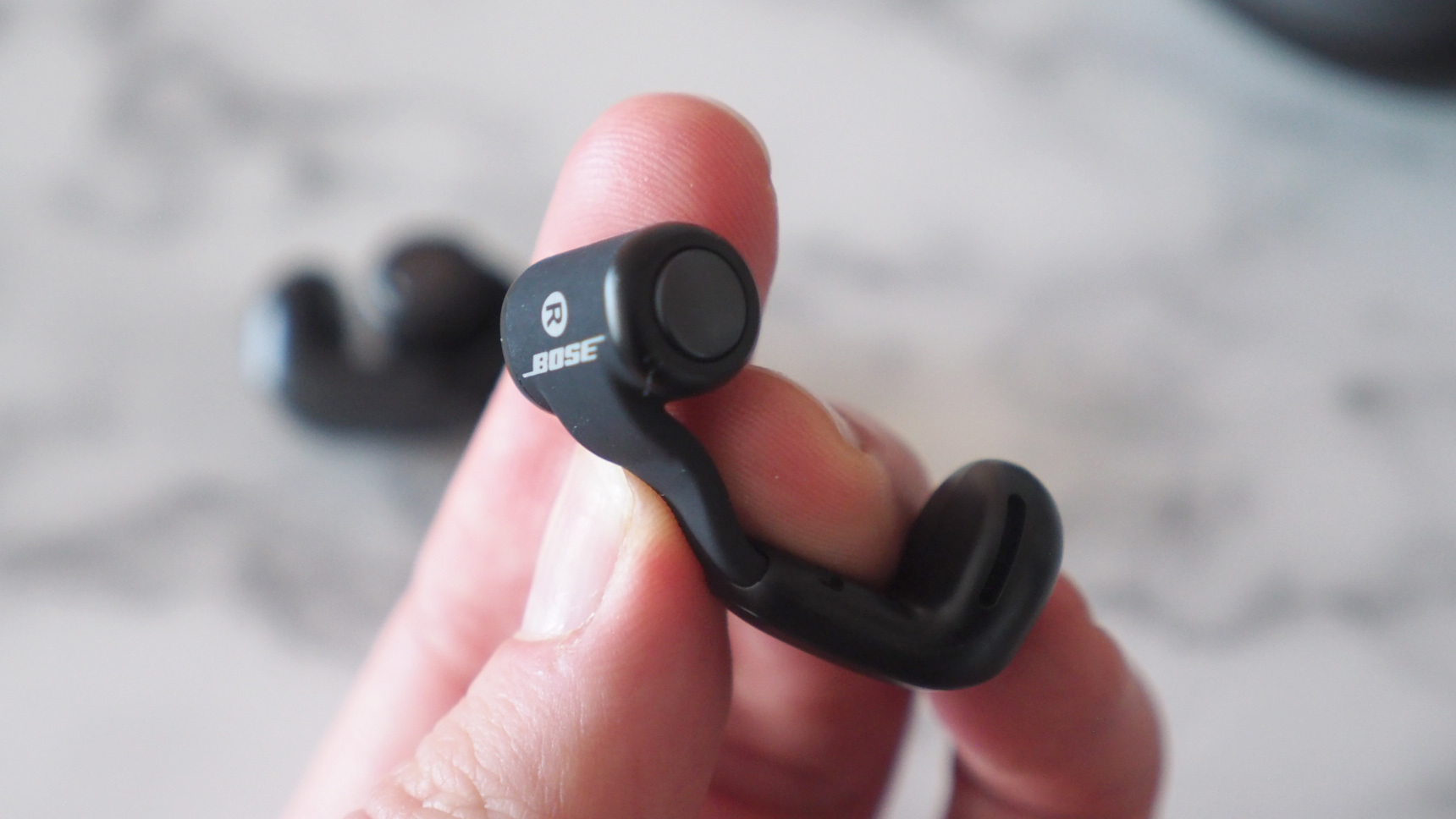
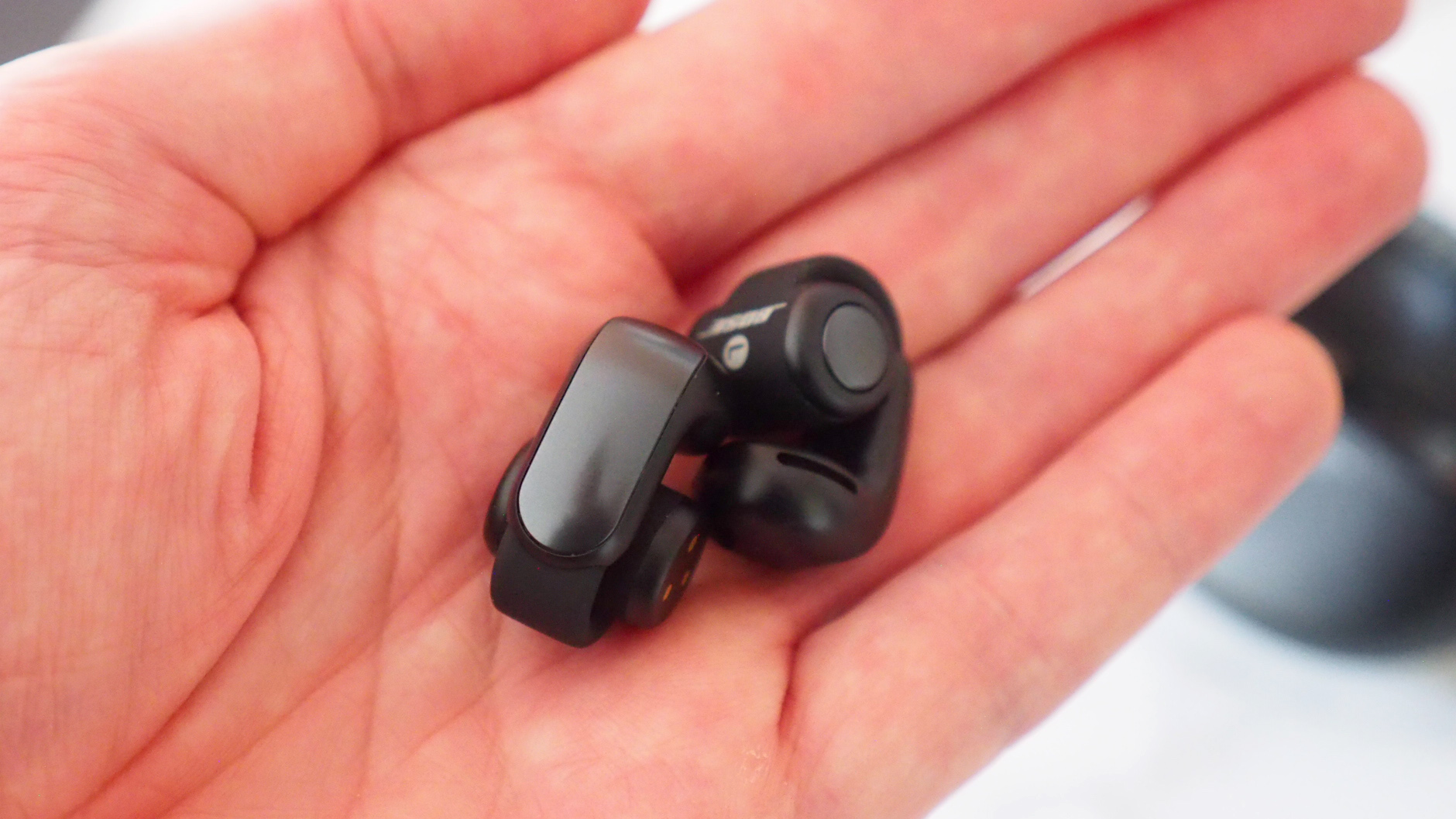
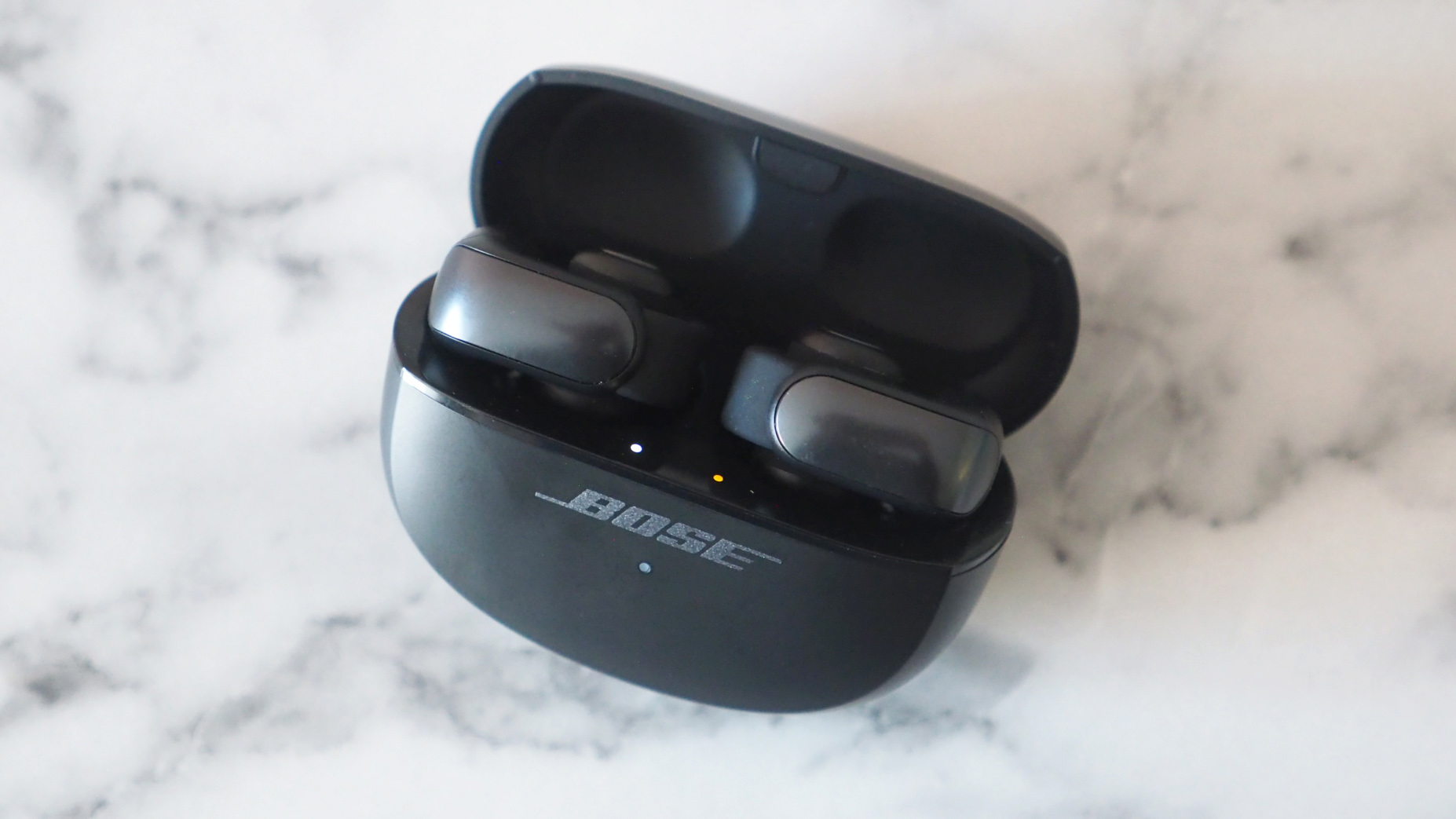
Specifications
Reasons to buy
Reasons to avoid
The Bose Ultra Open Earbuds are one of those earbuds that I didn't expect to be as good as they ended up being. I was gifted a pair when I attended Camp Strava 2024, and haven't stopped using them ever since, thanks to their superb fit and superb sound quality,
Unlike traditional earbuds that fit snugly into the ear canal, these earbuds rest on the outer ear, making them extremely comfortable, especially for extended wear. This design allows ambient sounds to mix with your audio, making them ideal for situations where you need to stay aware of your surroundings, such as running or cycling.
This all sounds familiar to runners who use bone-conduction headphones; however, Bose's earbuds sound much better and provide a better fit than those. Plus, thanks to the more compact design, they can be worn better with sunglasses and running hats, too.
Battery life is decent, offering up to 7.5 hours per charge, but using the Immersive Audio feature reduces this to around 4.5 hours. More than enough to see you through your long runs and even a marathon!
I would highly recommend the Bose Ultra Open Earbuds for those who prioritise comfort and sound quality over isolation.
Read Mike's full Bose Ultra Open Earbuds review. (Admittedly, it does not focus on the buds' running prowess, but it is an excellent review nonetheless.)
Best sound
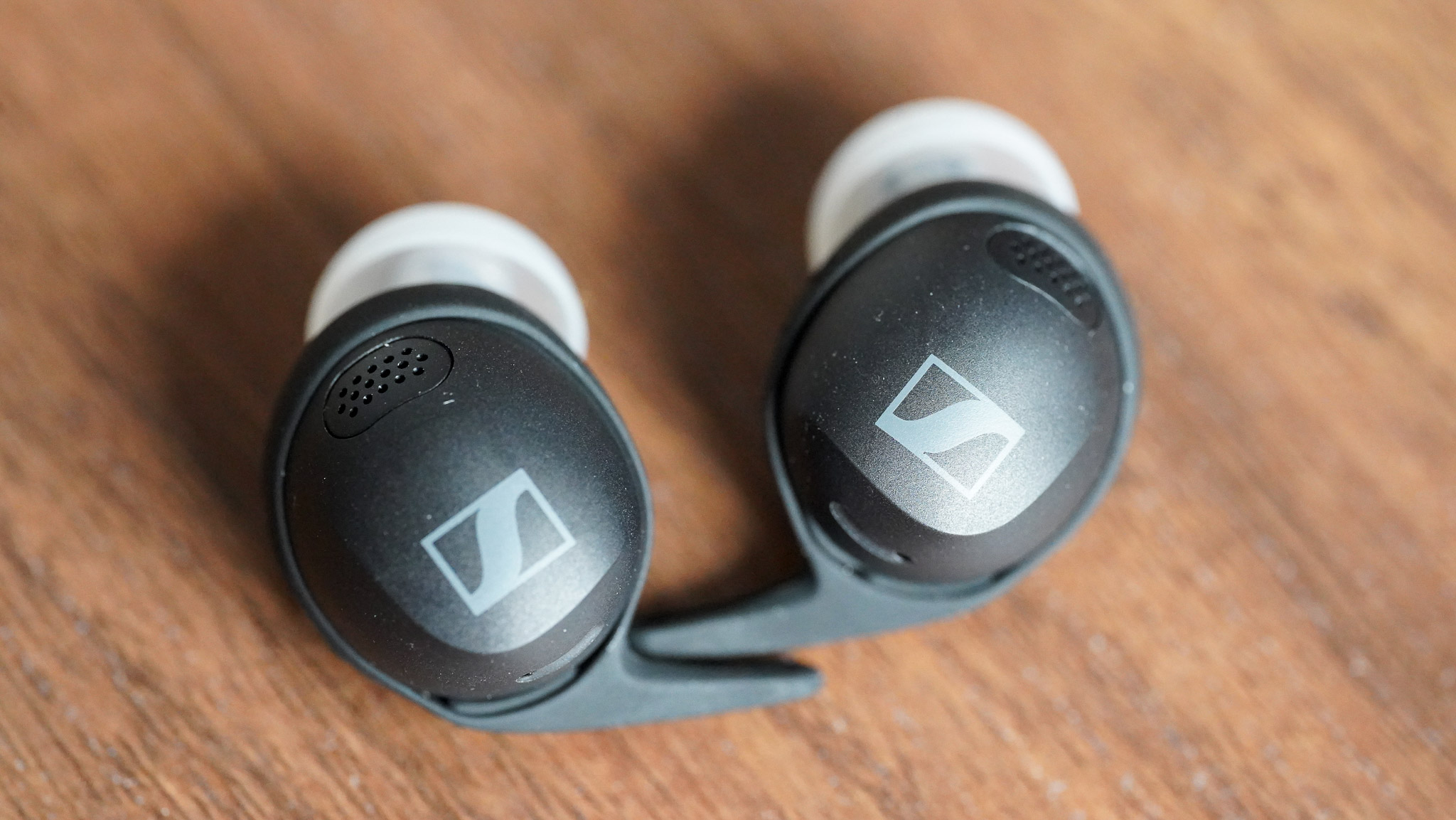
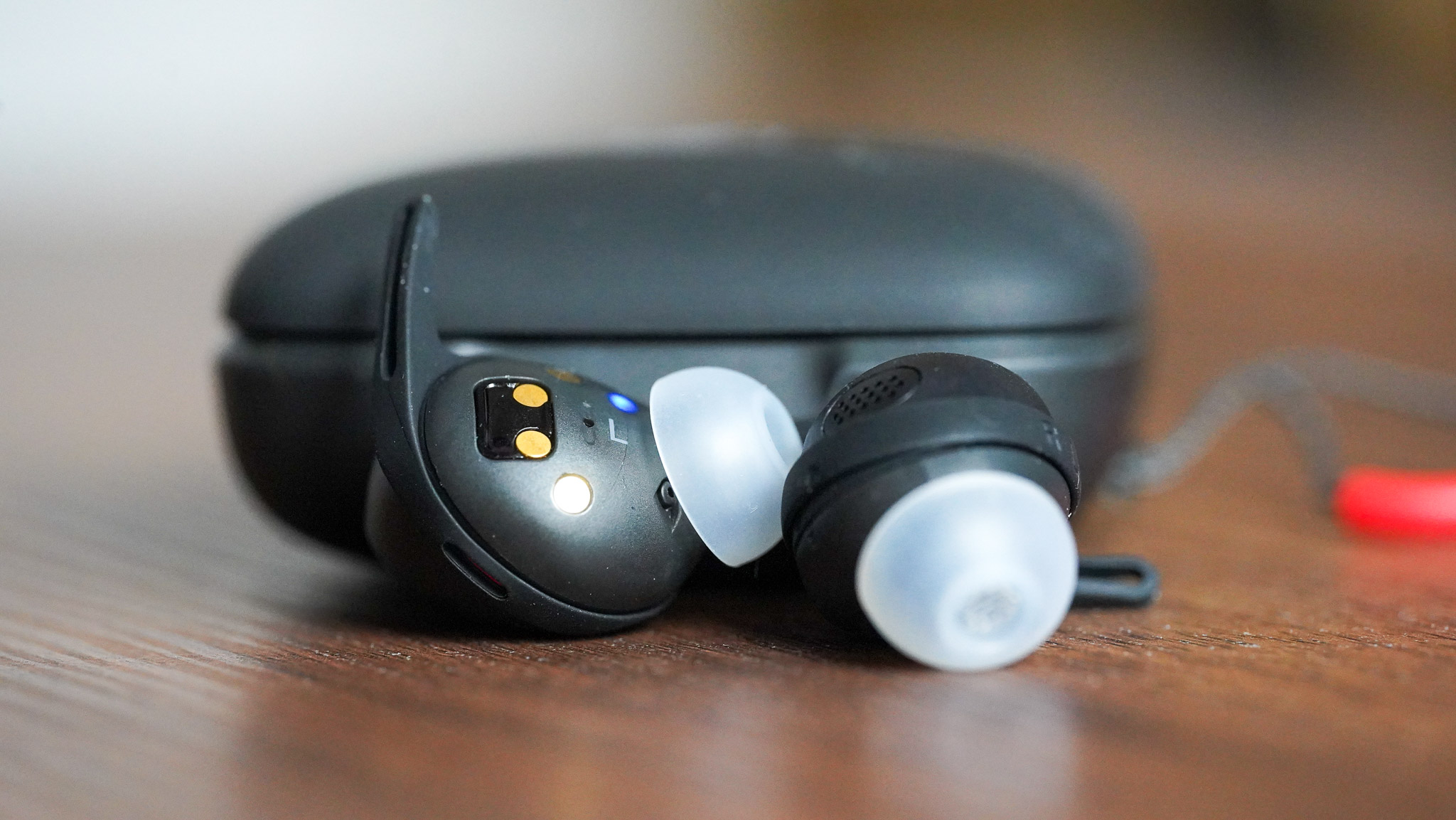
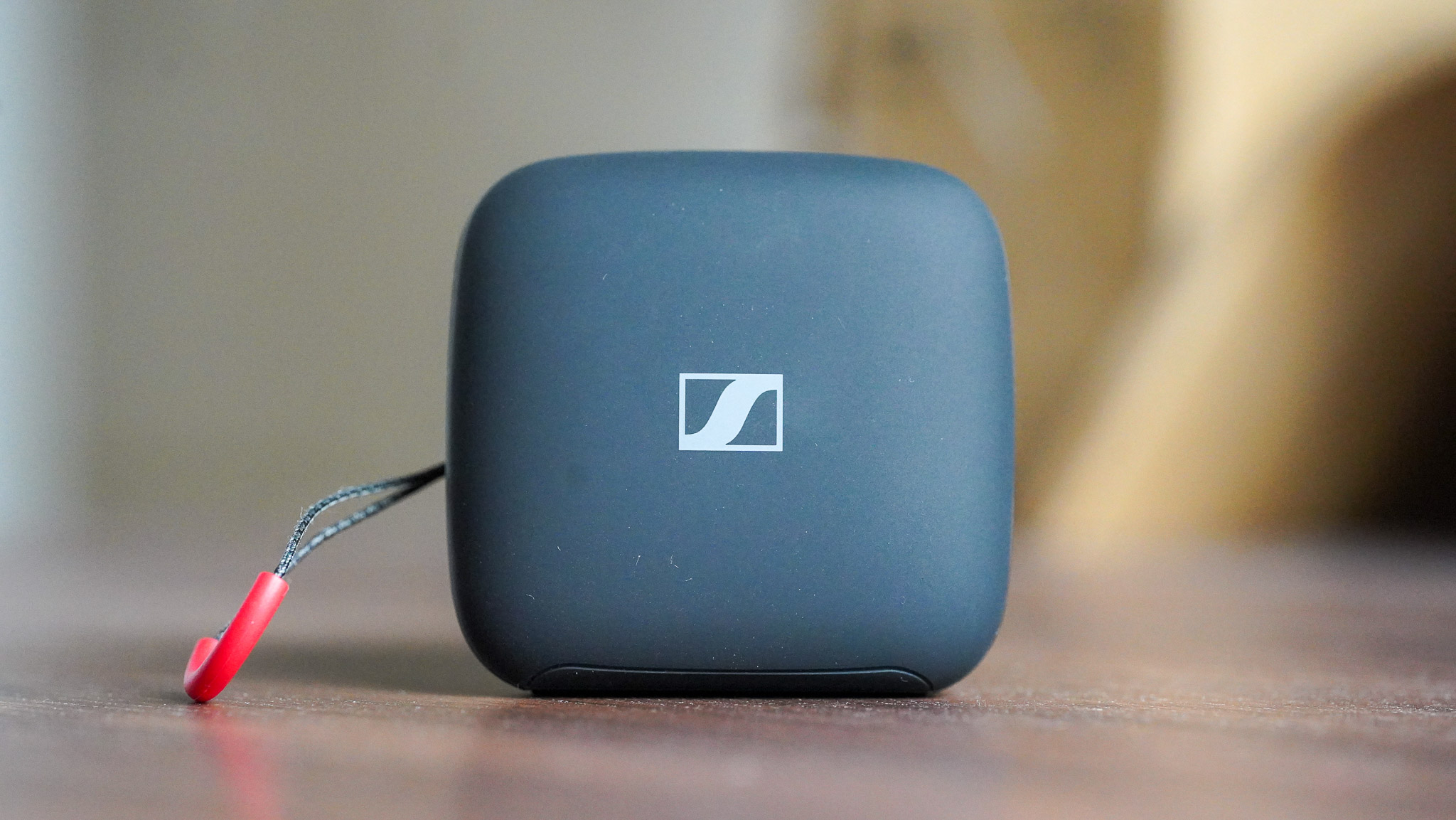
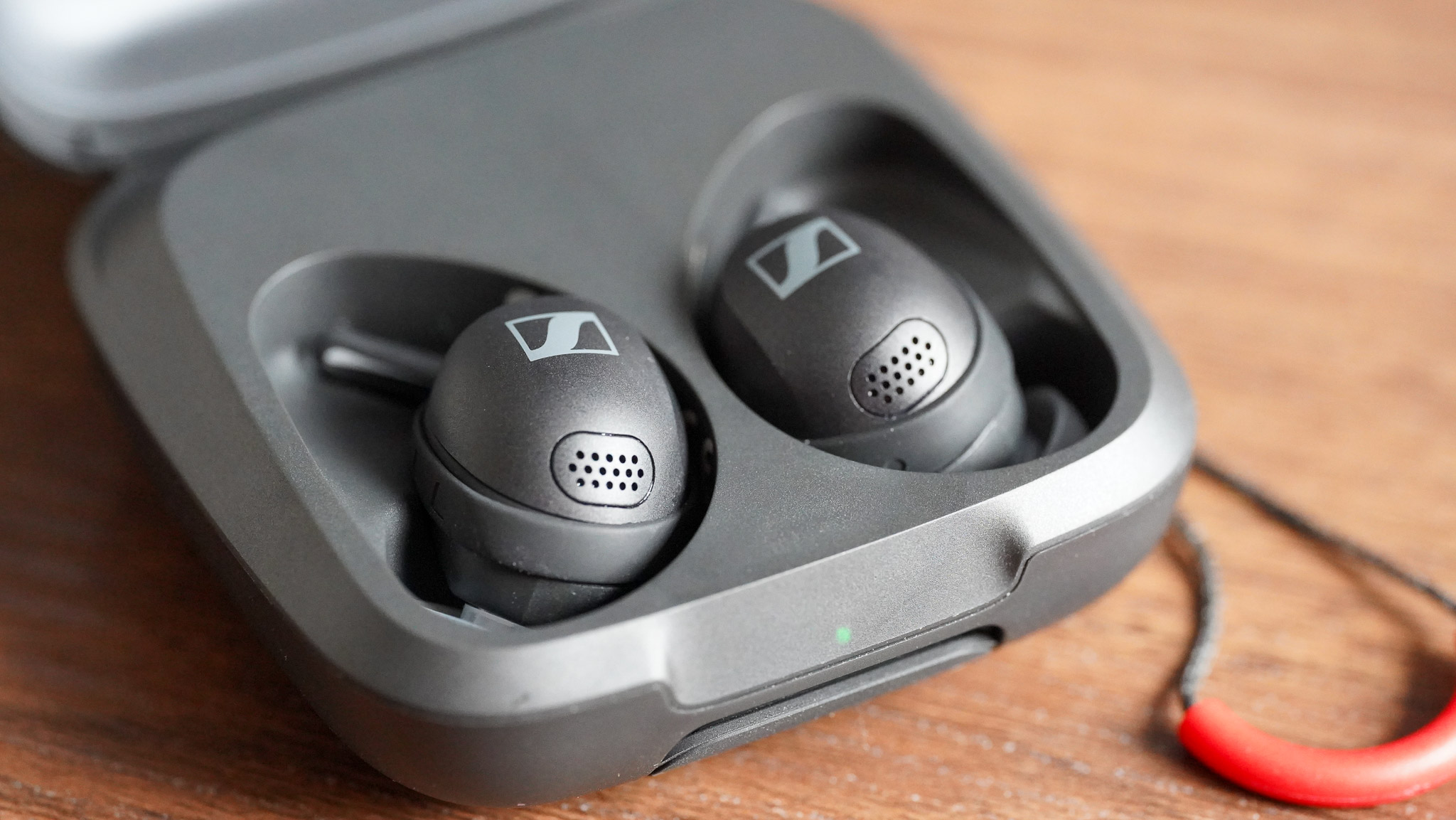
Specifications
Reasons to buy
Reasons to avoid
The Sennheiser Momentum Sport combines exceptional sound with fitness tracking capabilities, courtesy of innovative Polar sensors. Despite not replacing running watches for sports tracking, these waterproof buds offer unmatched comfort and functionality. Their user-friendly app enhances workouts, making them a worthwhile investment for fitness enthusiasts.
Integrating heart rate and temperature monitoring into workout headphones is novel, with Sennheiser's offering standing out for its sound quality and user experience. Although similar features exist in competitors like the Amazfit PowerBuds Pro, Sennheiser's brand reputation and refined app make the Momentum Sport compelling.
The touch controls might be fiddly during running, but the 10mm drivers deliver high-fidelity sound, supported by active noise cancellation and transparency mode. Heart rate and temperature tracking, while not perfect, offer added insights for workouts, anticipating broader compatibility with wearables and apps.
Overall, the Momentum Sport excels in comfort, sound quality, and sensor integration, setting a high standard for premium workout earbuds, although future iterations could refine the sensor accuracy and pricing strategy.
Read our full Sennheiser Momentum Sport review.
Most durable
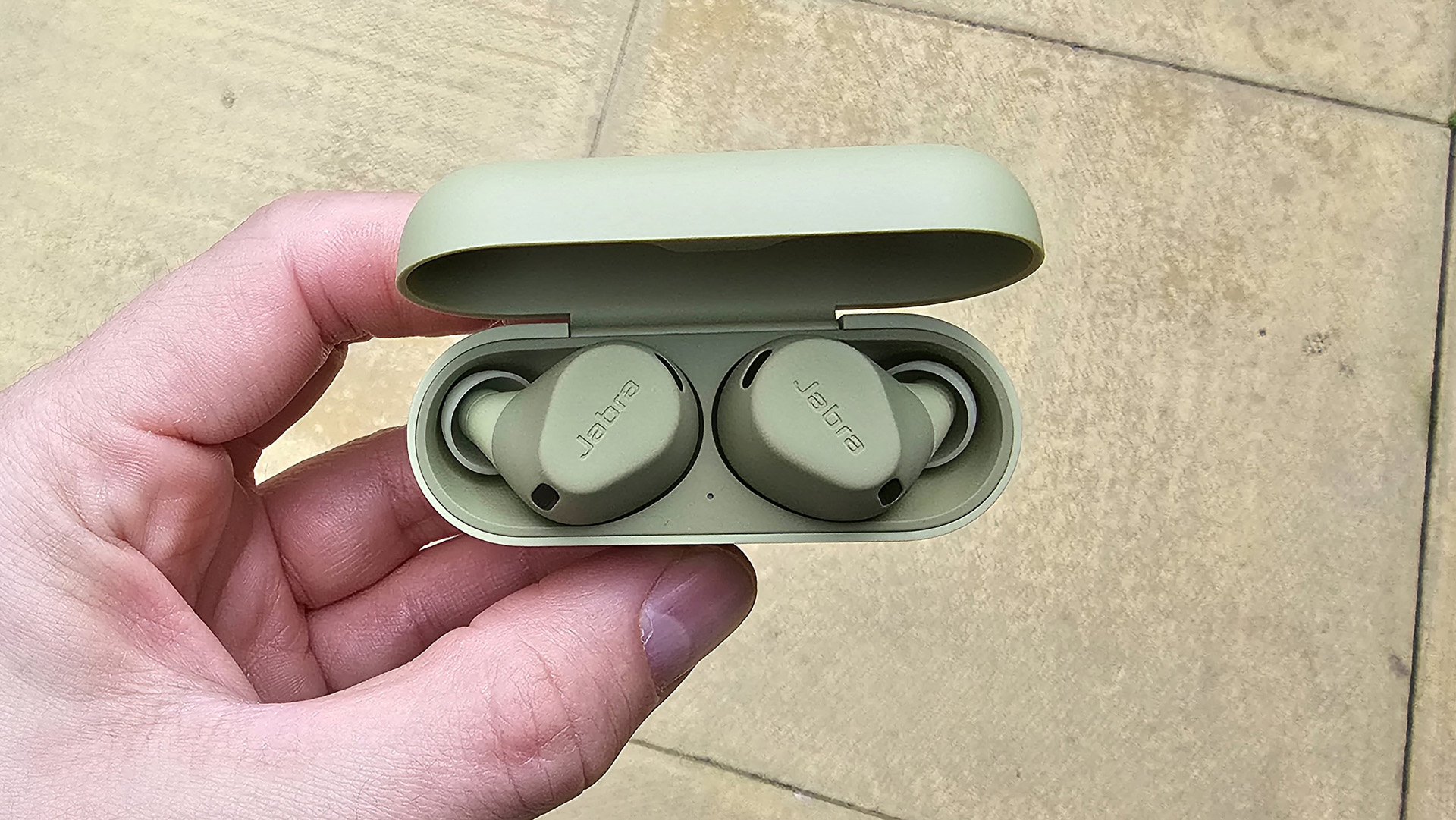
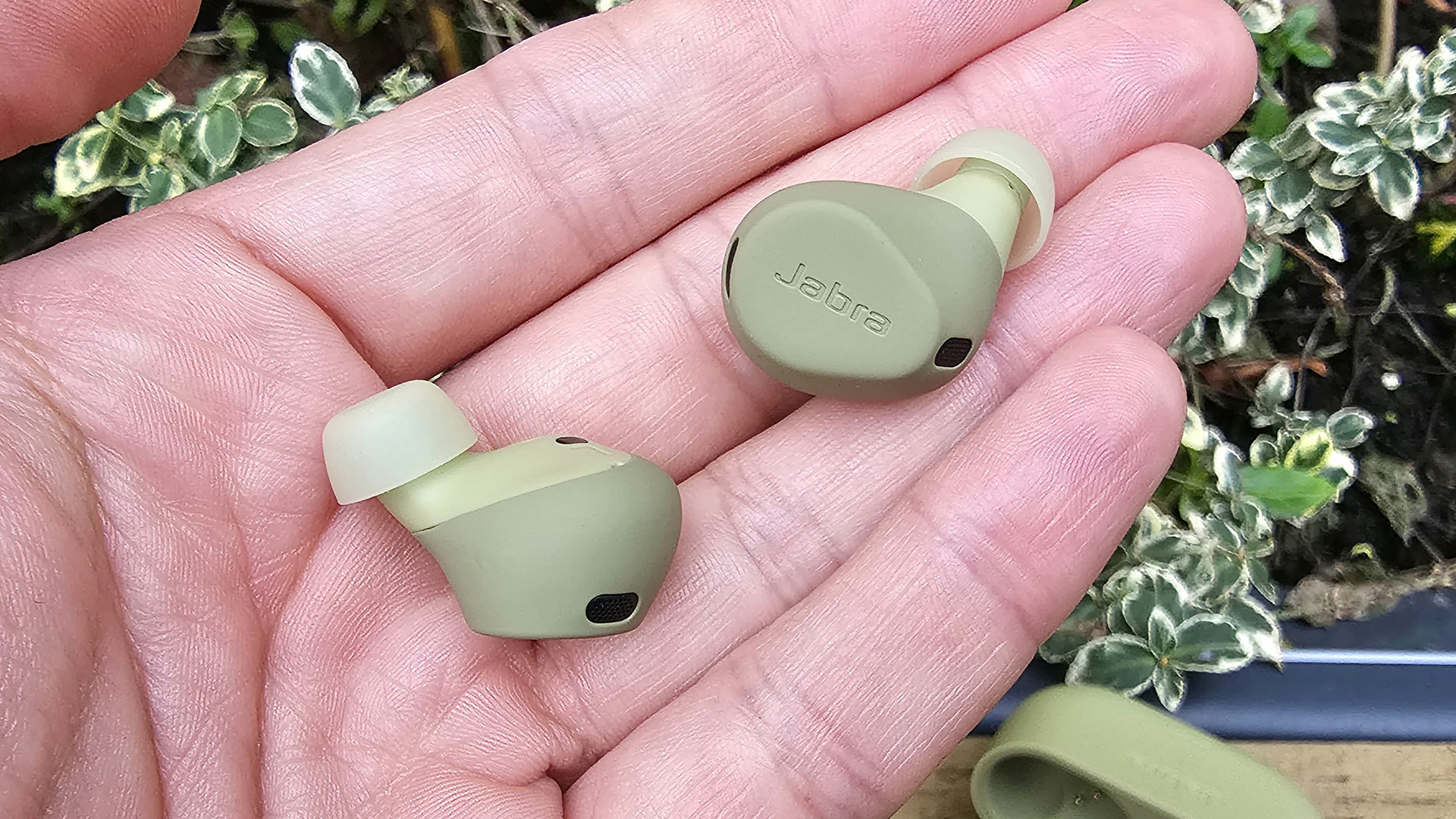
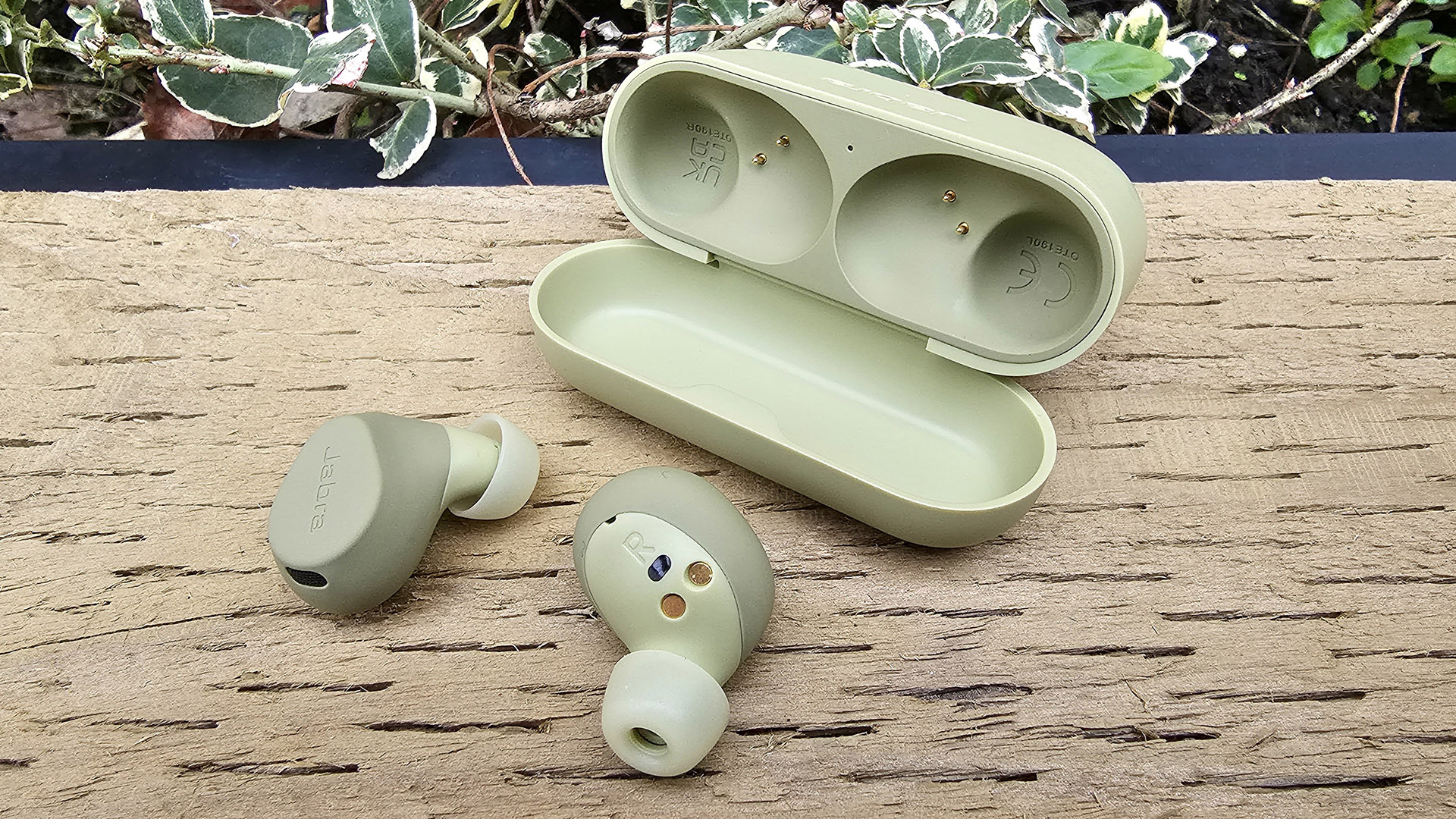
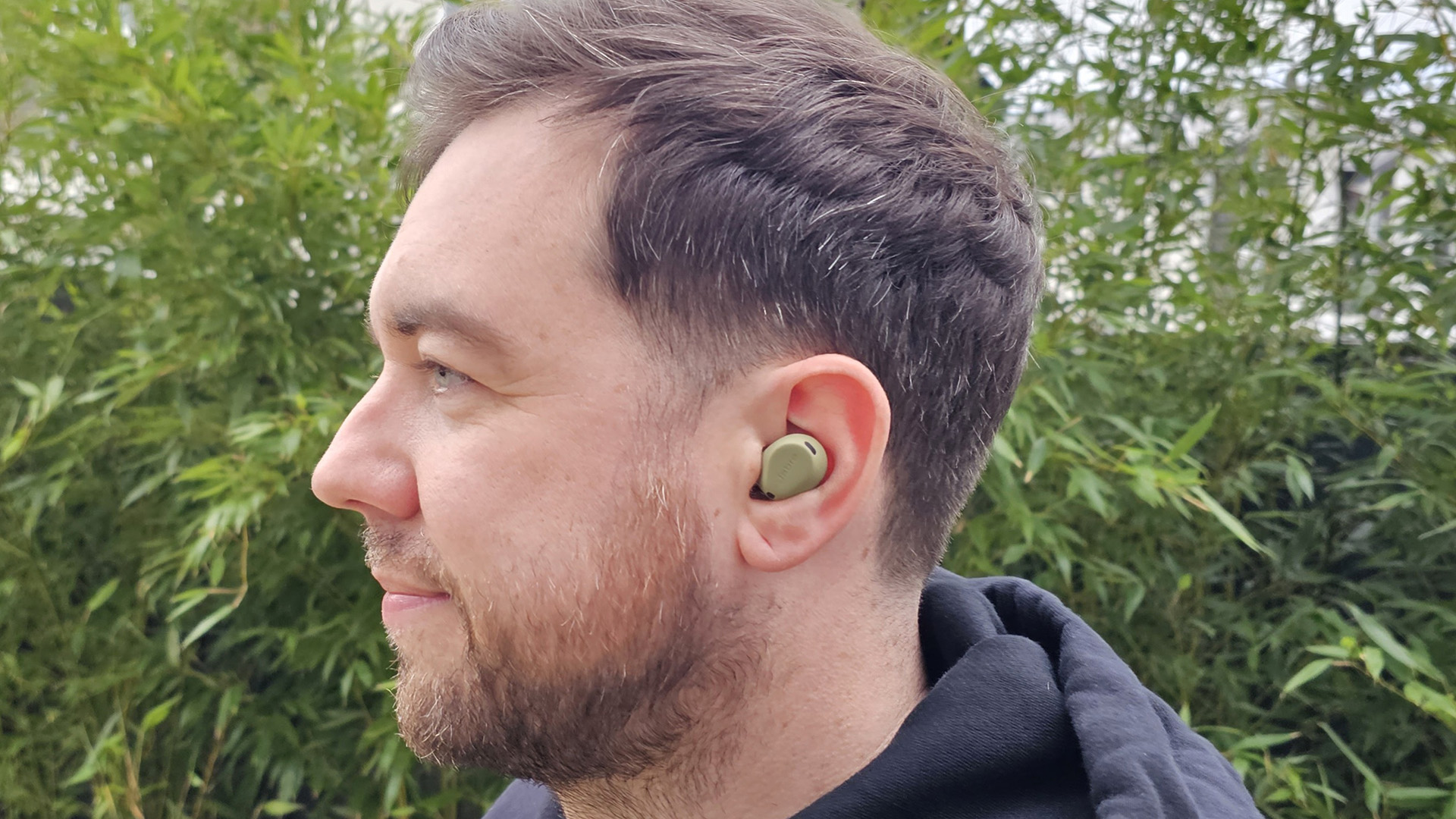
Specifications
Reasons to buy
Reasons to avoid
The Jabra Elite 8 Active Gen 2 are certainly the toughest running headphones I’ve tested, designed to withstand just about anything. Thanks to IP68 waterproofing and dust resistance, they shrug off sweat, rain, and even an accidental rinse under the tap. The ShakeGrip coating keeps them firmly in place, and I never had to readjust, even during long runs or plyometric workouts.
Sound quality is solid, with Adaptive Hybrid Active Noise Cancellation (ANC) that does a good job of cutting out background noise. If you prefer to stay aware, HearThrough mode lets in just enough ambient sound. The customisable EQ is a nice touch, making it easy to tweak the audio profile to suit different workouts.
Battery life is reliable, offering 8 hours per charge (32 total with the case). The rugged build and secure fit make them a strong choice for runners who train in all conditions. While they don’t have the most powerful sound on the list, if durability is your priority, the Elite 8 Active Gen 2 are hard to beat.
Read our full Jabra Elite 8 Gen 2 Active review.
Also consider: The Jabra Elite 7 Active earbuds offer personalised sound, improved fit, and call quality with a three-microphone setup. With eight hours of playback and 22 hours in the case, they offer a similarly impressive battery life, all at a lower cost than the Elite 8 Pro.
Most comfortable
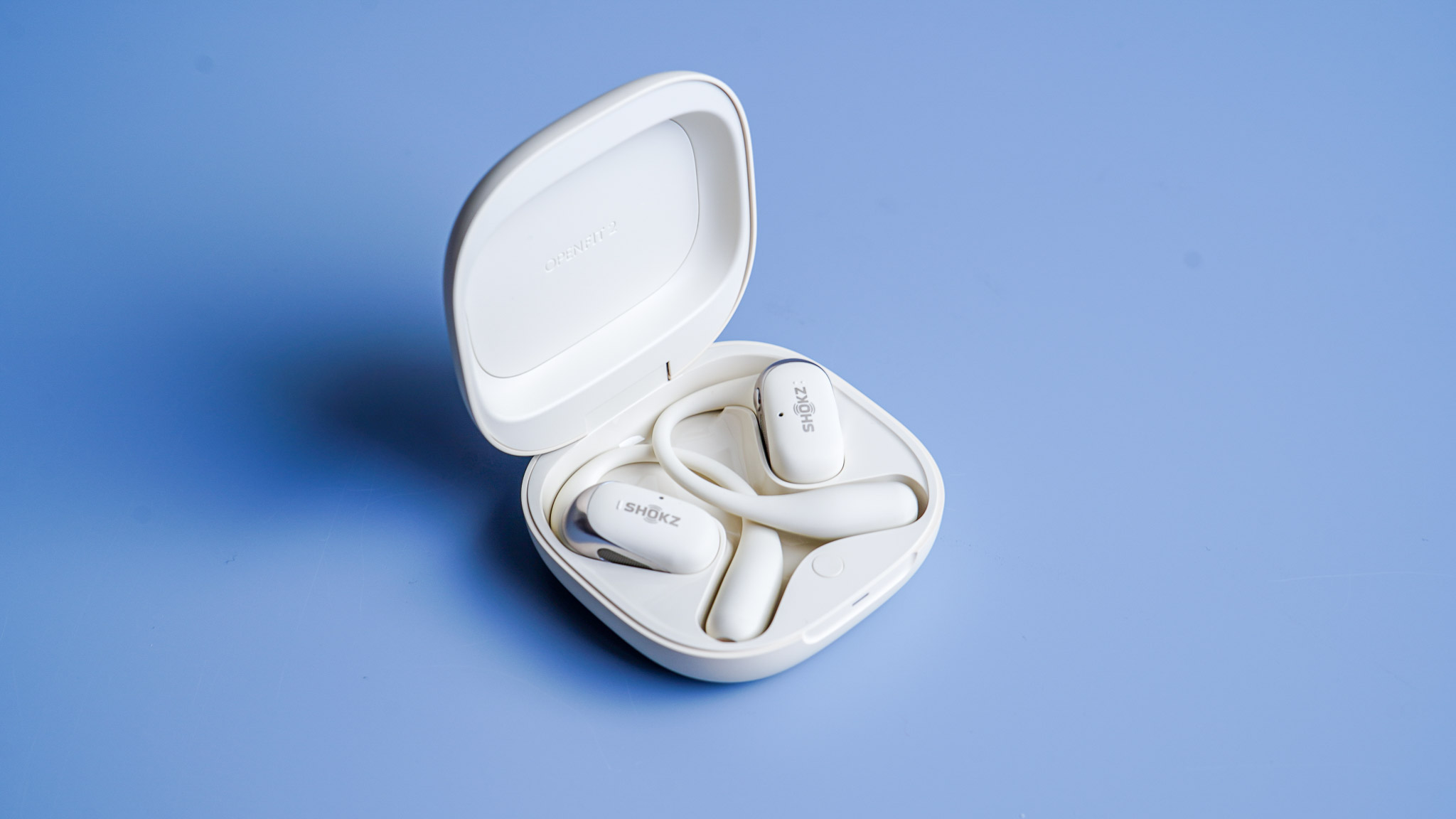
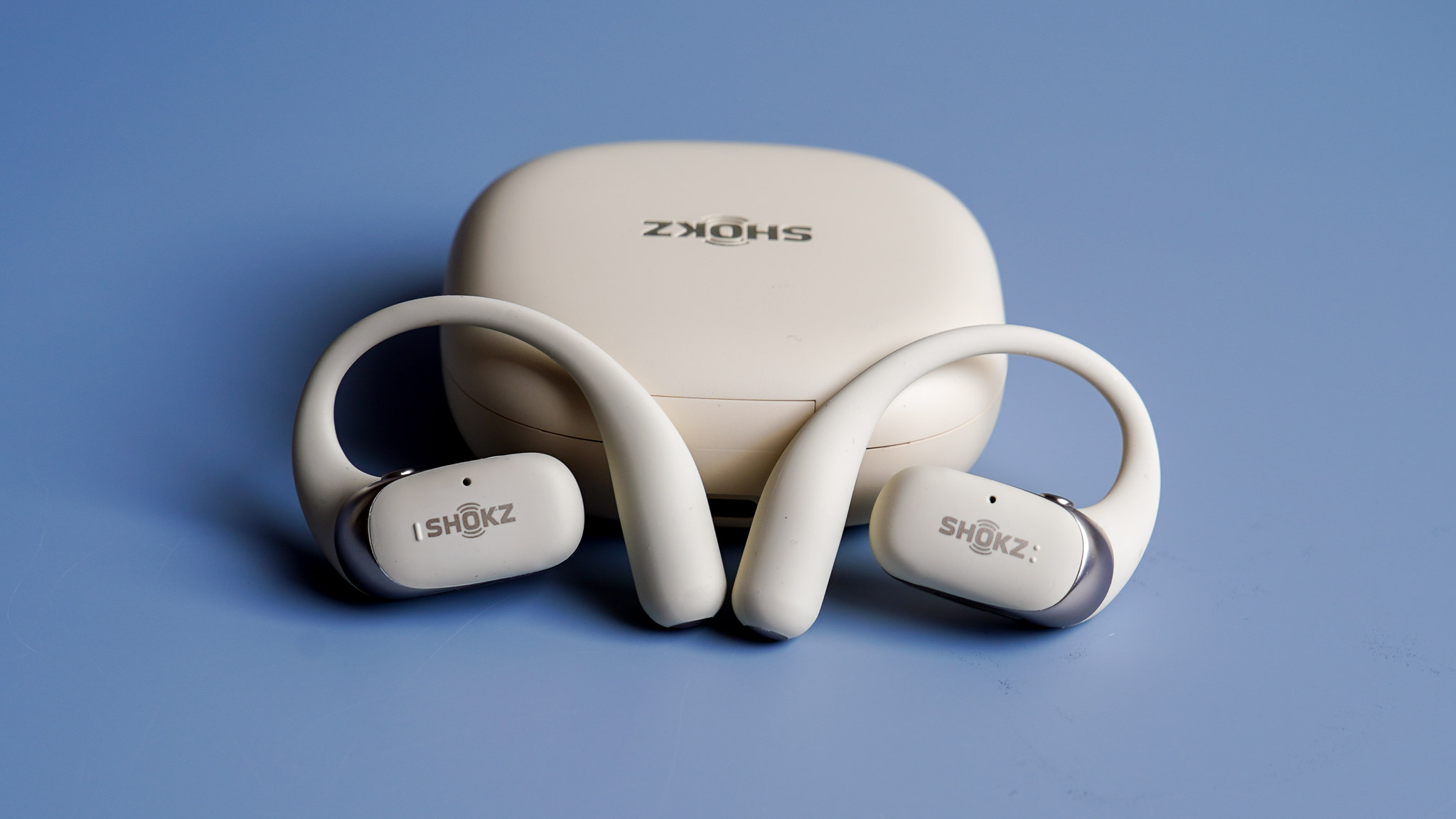
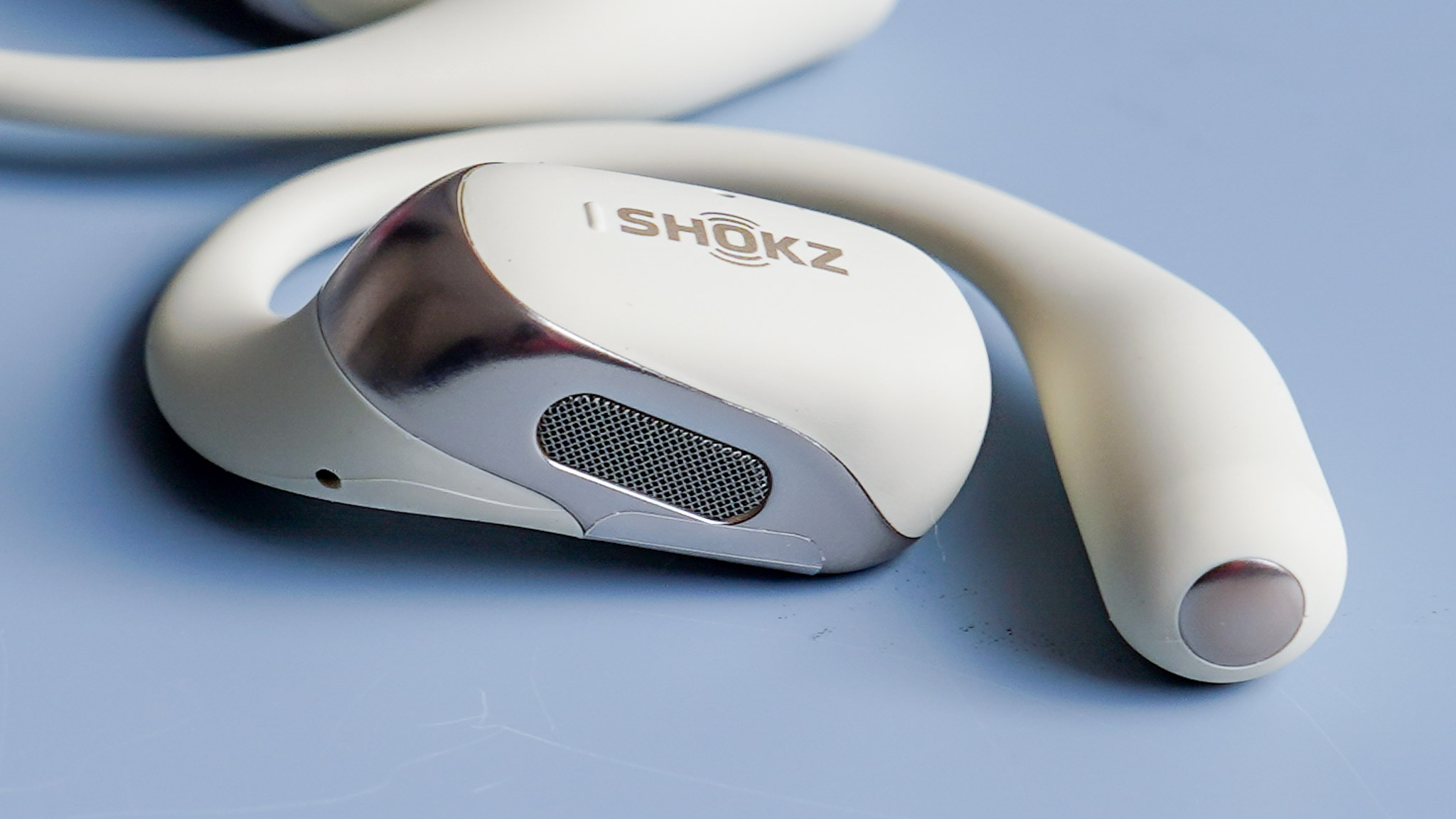
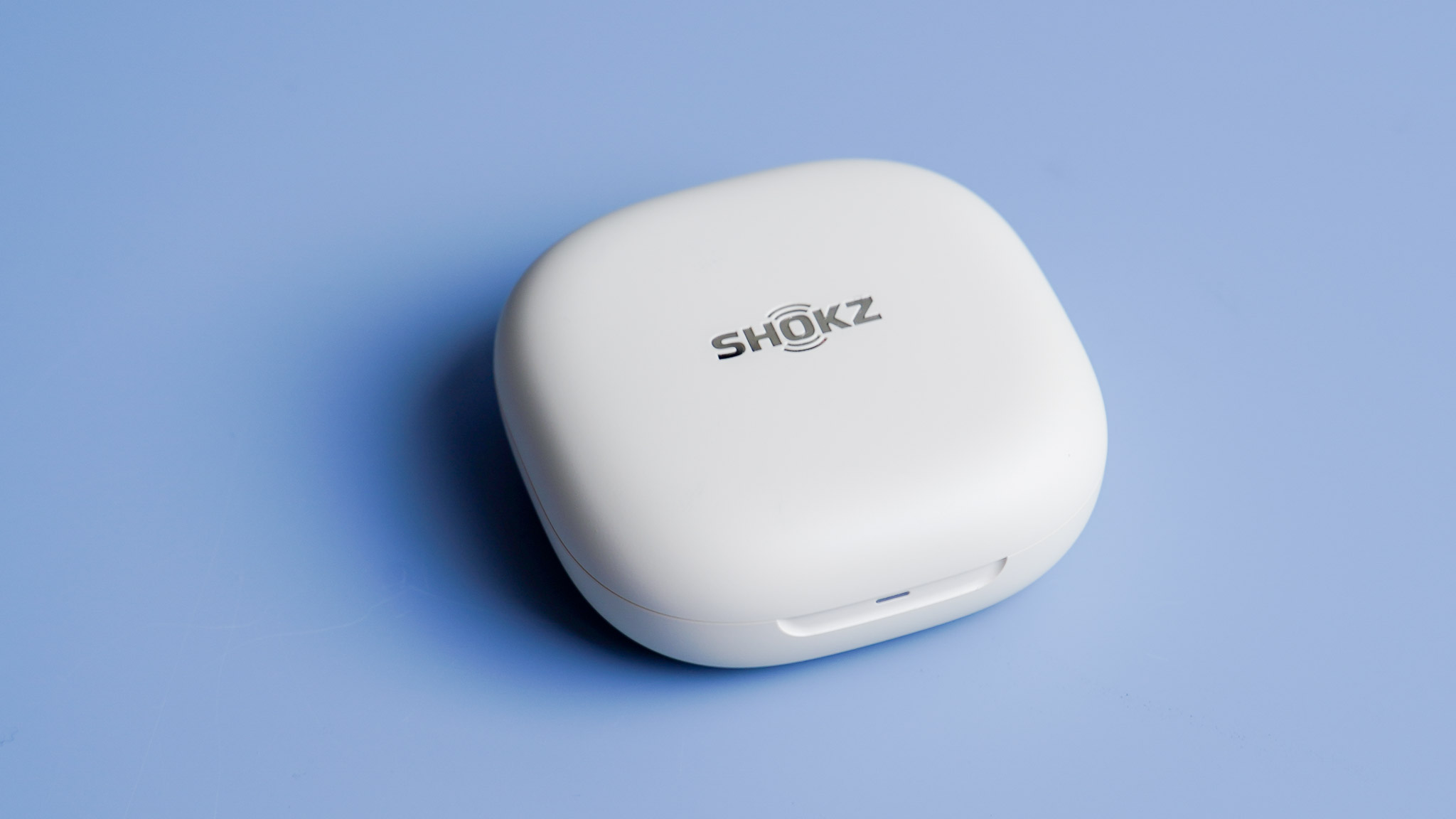
Specifications
Reasons to buy
Reasons to avoid
The Shokz OpenFit 2 takes open-ear listening to the next level, offering a comfortable, barely-there fit and impressive audio clarity for those who want to stay aware of their surroundings while running or working out. Unlike traditional bone conduction models, these true wireless earbuds use air conduction, delivering more natural sound without sacrificing situational awareness.
I liked the new refined ear hook design, which makes the headphones lighter, more secure, and comfortable for all-day wear. The large, 16.2mm drivers pump out richer bass than previous iterations, giving workouts an extra energy boost, while the OpenBass technology ensures clarity across the frequency range.
Battery life is solid, with up to 29 hours of total playtime when factoring in the case, and a quick five-minute charge provides an extra hour of listening. Bluetooth 5.3 and multipoint pairing make them easy to use across devices, while IPX5 water resistance ensures they can handle rain and sweat.
For runners and cyclists who need ambient awareness, the Shokz OpenFit 2 is one of the best open-ear workout headphones available, balancing comfort, sound, and safety in a sleek package.
Read our full Shokz OpenFit 2 review.
Best on-ear
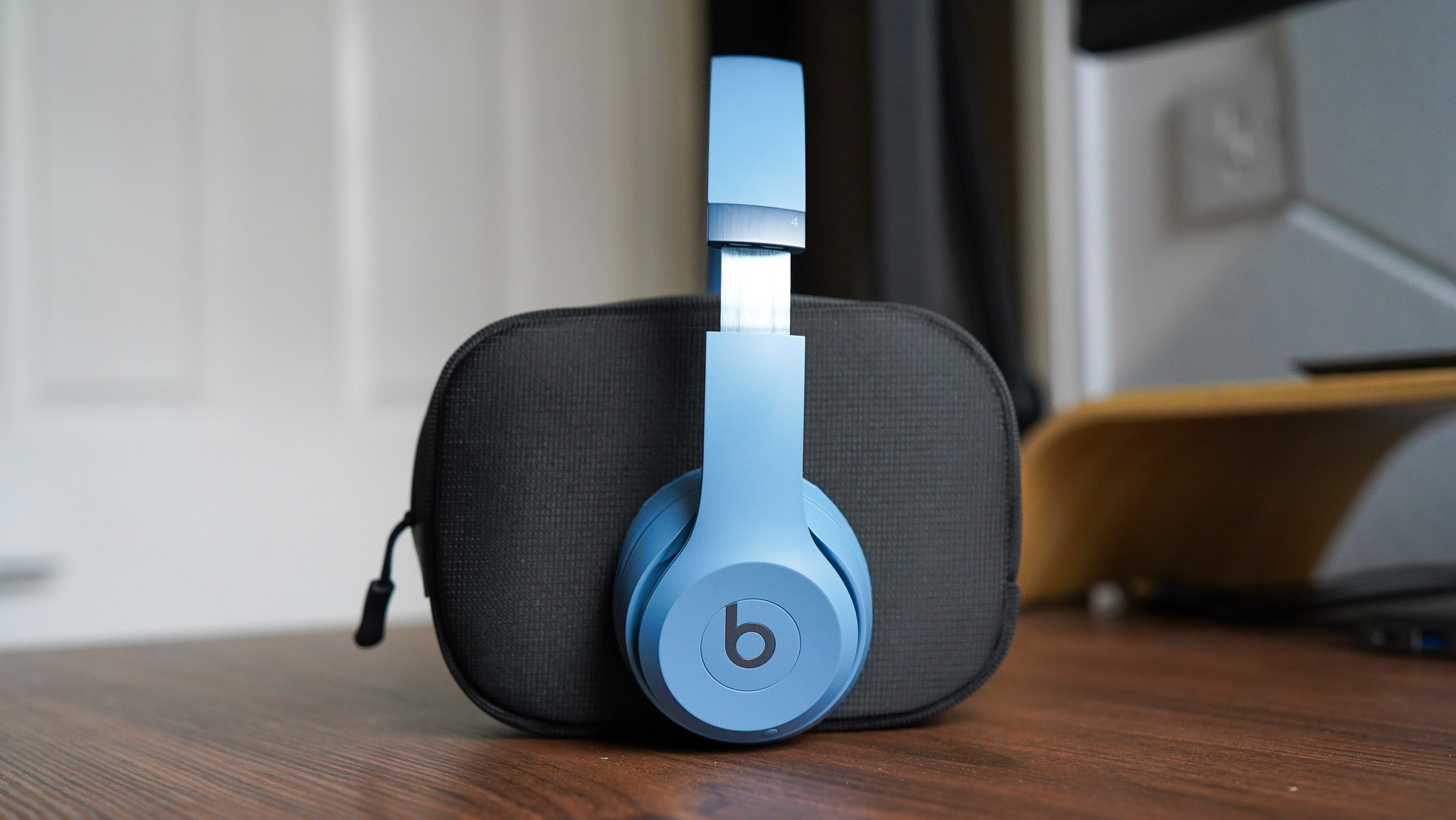
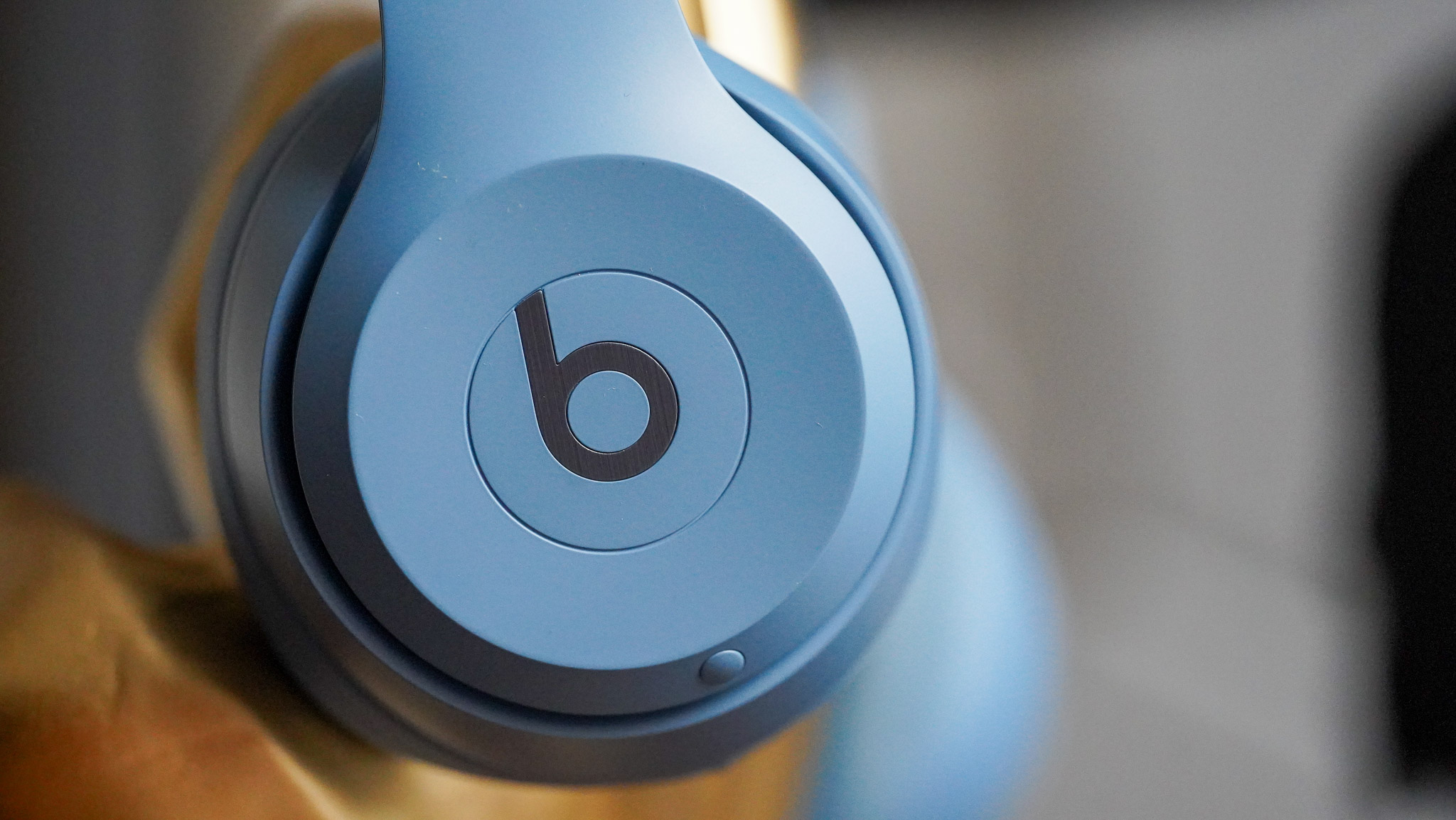
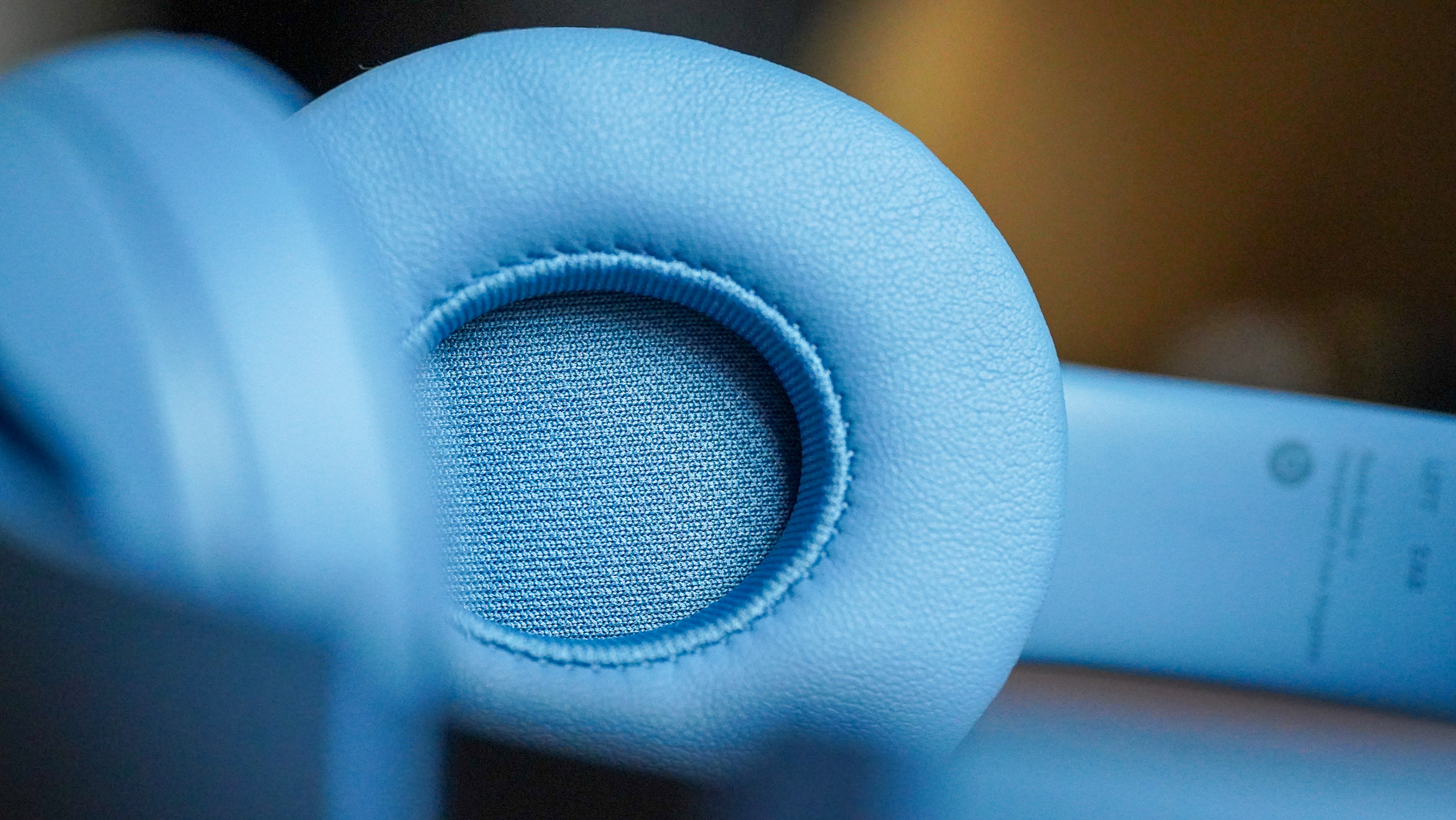
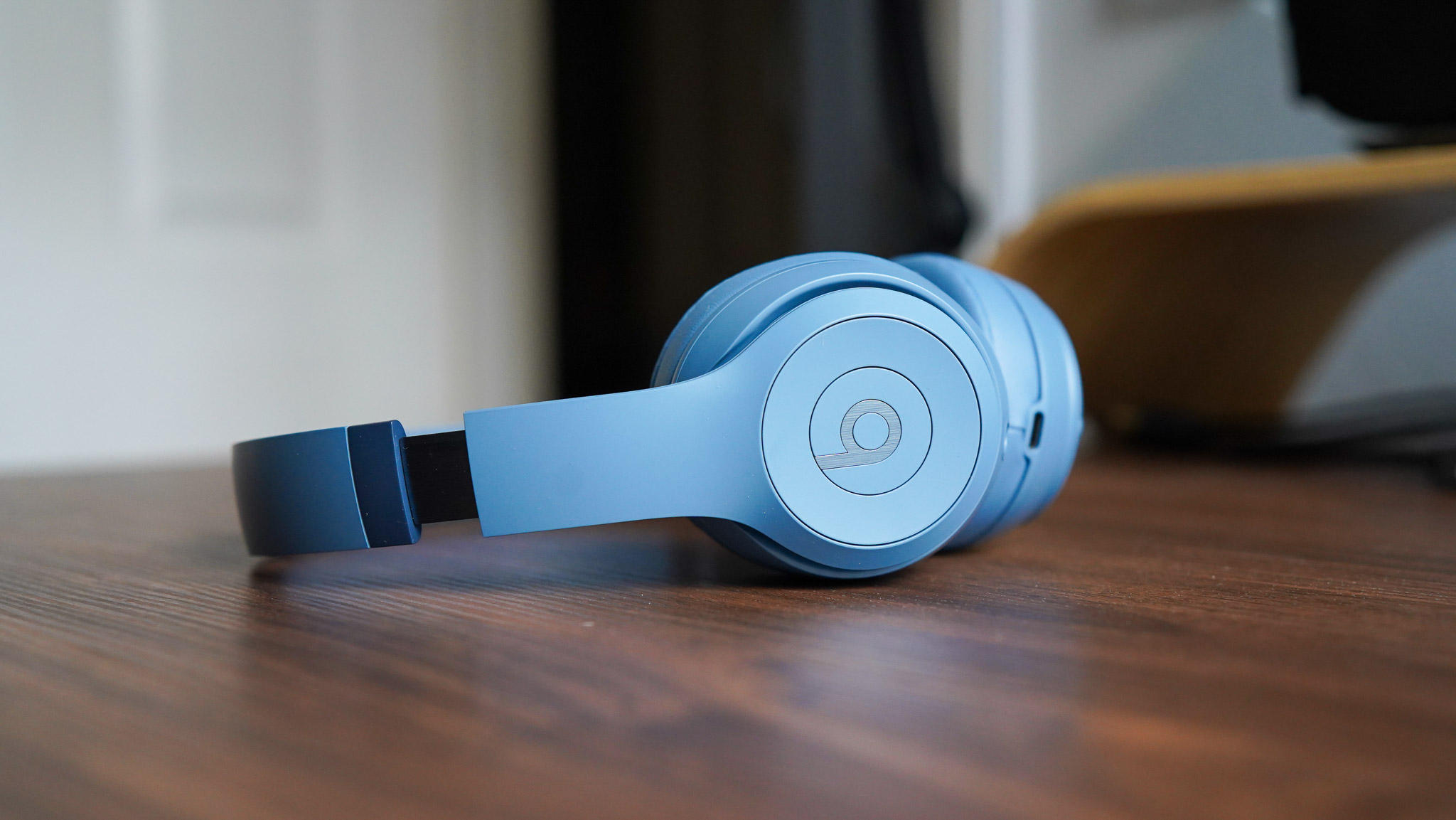
Specifications
Reasons to buy
Reasons to avoid
The Beats Solo 4 headphones offer an impressive blend of style, comfort, and sound quality, making them a solid choice for everyday listening.
Sound quality is where the cans truly shine, delivering rich, balanced audio with punchy bass and clear highs. The headphones offer excellent passive noise isolation, ensuring an immersive listening experience even in noisy environments. There is no ANC, however.
Comfort is another highlight, thanks to the soft ear cushions and ergonomic design that provide a snug fit without causing discomfort during long listening sessions. The on-ear controls are intuitive and easy to use, allowing for seamless navigation of music playback and calls.
Battery life is impressive, with up to 50 hours of playback on a single charge. This ensures that the headphones can keep up with your busiest days without needing frequent recharging. The Fast Fuel feature provides 3 hours of playback with just a 10-minute charge, perfect for quick top-ups on the go.
The Beats Solo 4 headphones offer a winning combination of style, comfort, and performance, making them an excellent choice for anyone in the market for premium on-ear headphones. Whether you're commuting, working out, or simply relaxing at home, the Beats Solo 4 deliver a top-tier audio experience that won't disappoint.
Read our full Beats Solo 4 review.
Also consider: Need more battery life? Adidas RPT-02 SOL offers a premium listening experience tailored for active use. With excellent sound quality, a long battery life of up to 80 hours, and effective passive noise cancellation, they're ideal for workouts. The ergonomic design ensures a secure fit, but tightness may be a concern for all-day wear.
Best for small ears
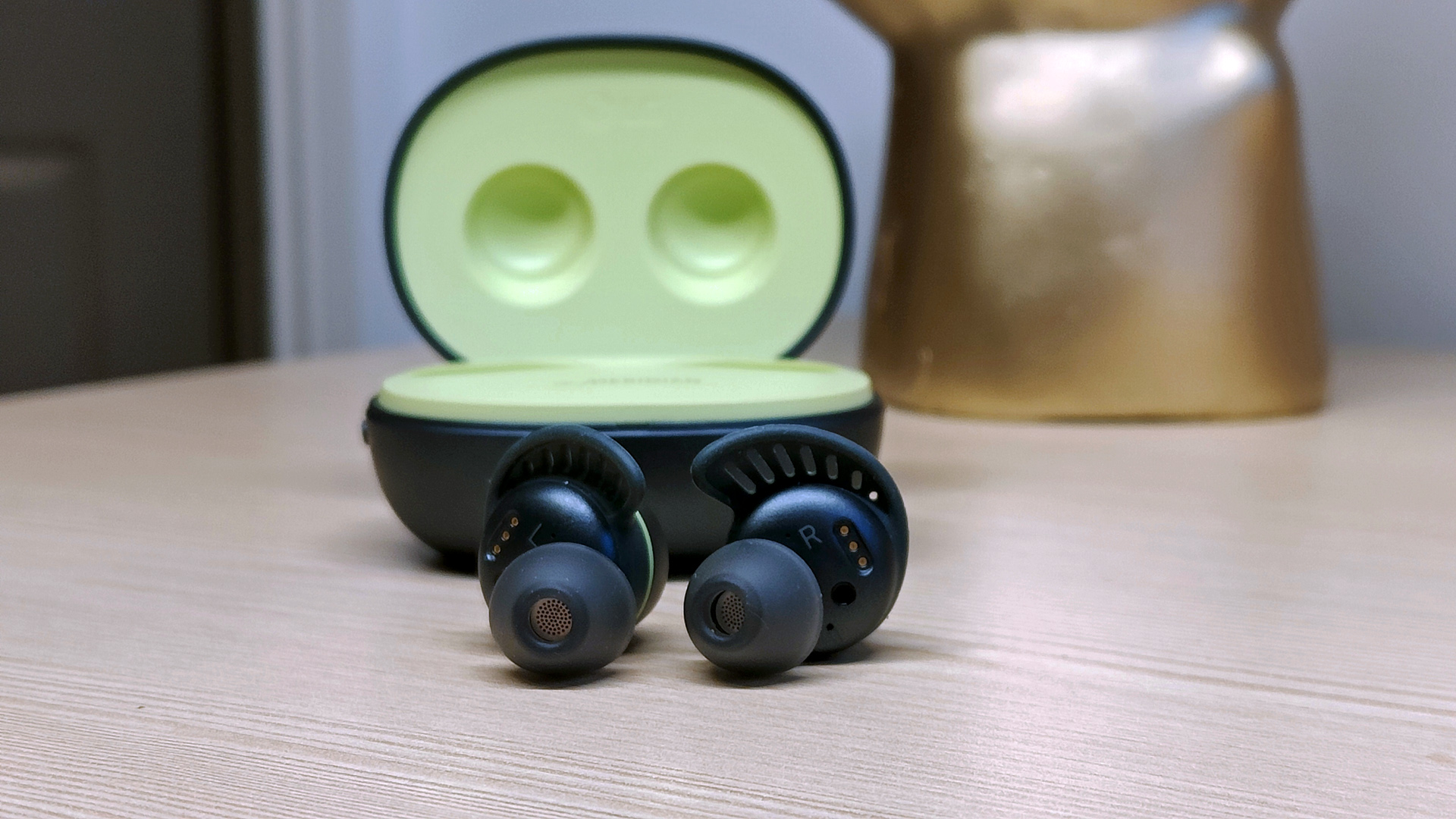
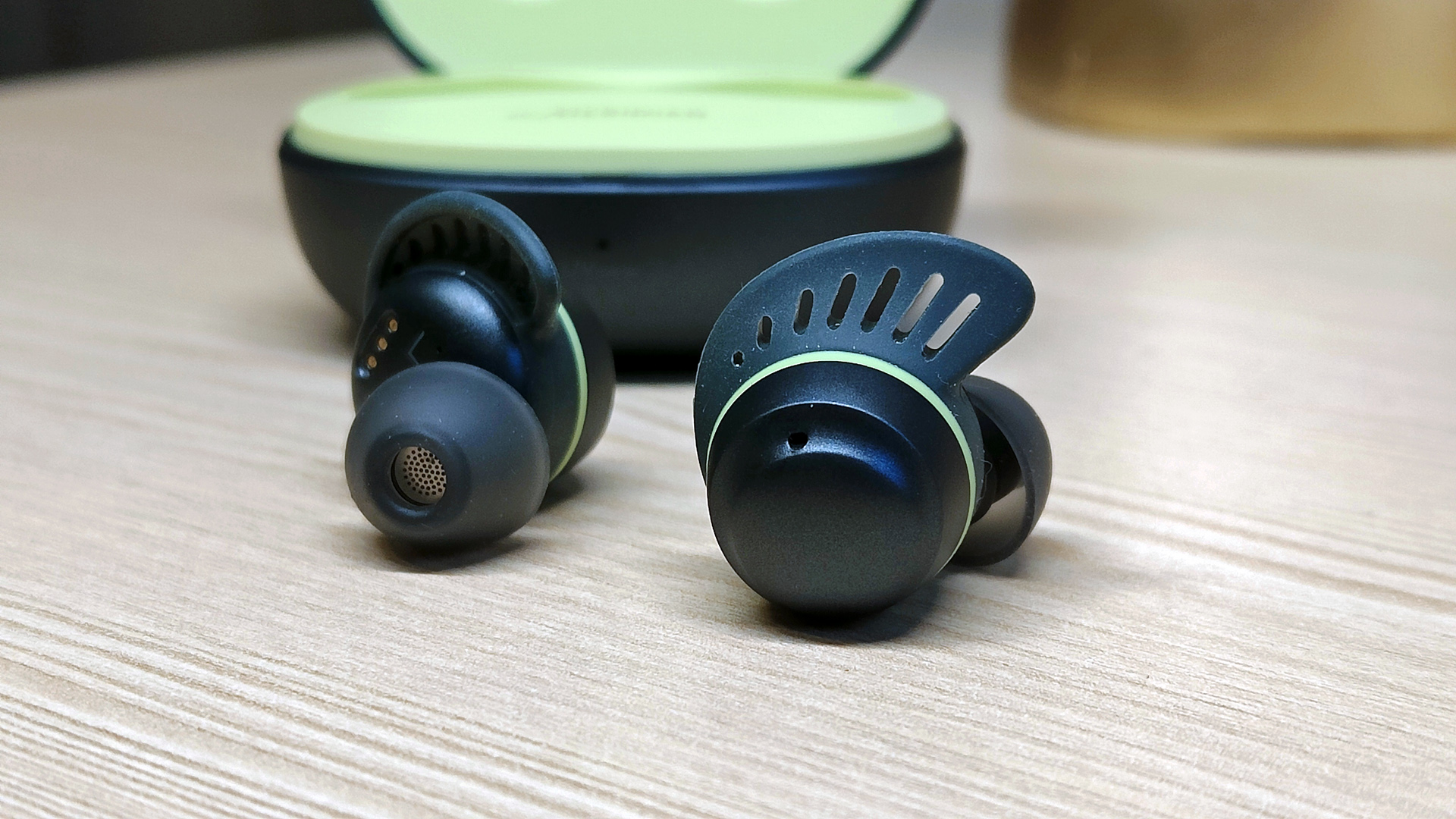
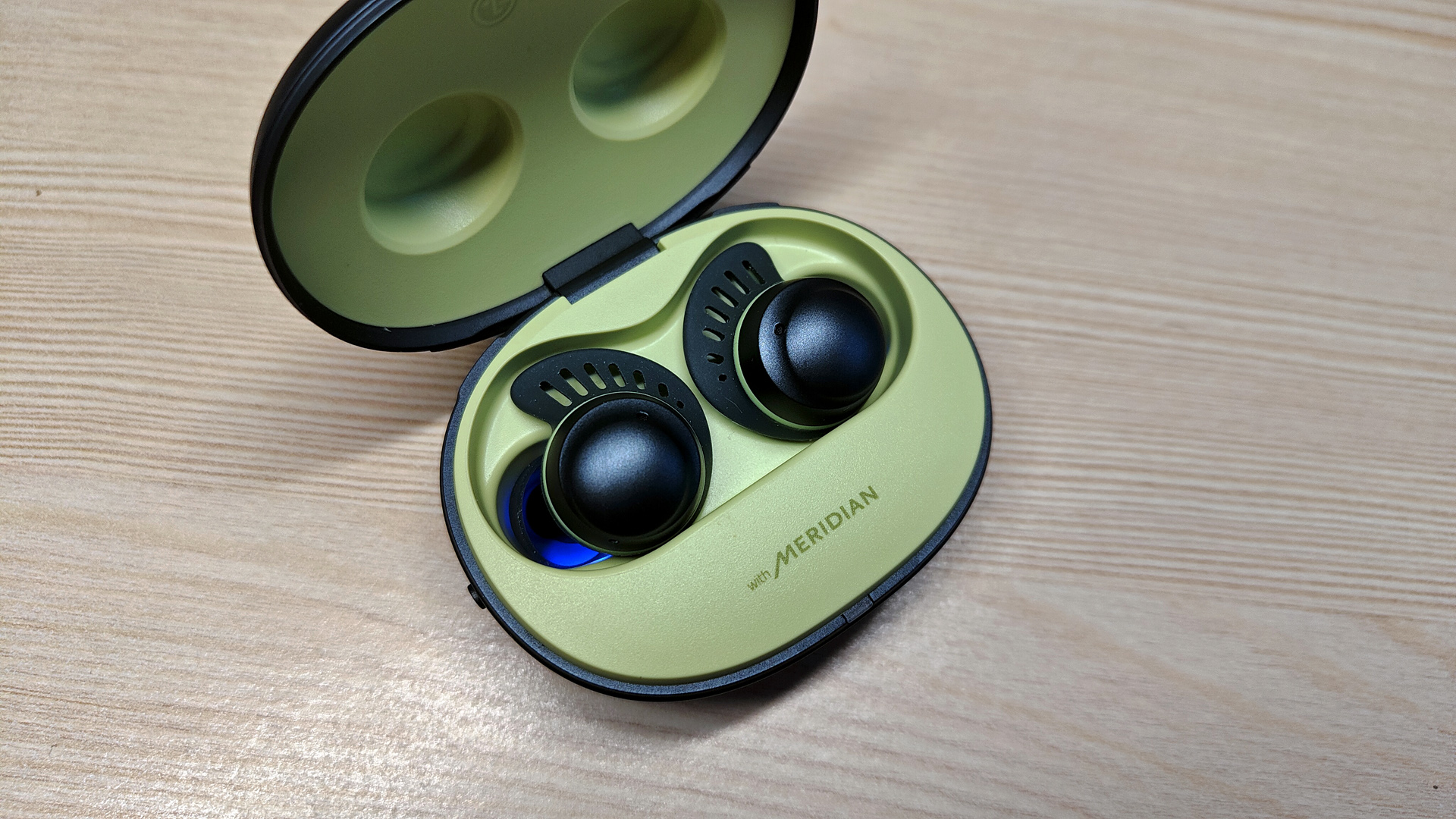
Specifications
Reasons to buy
Reasons to avoid
The LG Tone Free-Fit UTF8 took me by surprise. Not that I didn't expect LG's dedicated workout to sound good, but these compact buds offer so much more than just excellent sound quality.
Despite the small form factor—the Tone Free Fit UTF8 are some of the smallest workout headphones I've tried—the earbuds sound exceptionally clear. Better still, they have ANC and Ambient Mode so that you can use them for both indoor and outdoor training.
The LG Tone Free Fit UTF8 is very comfortable to wear for extended periods of time. The box includes three wing tips and ear tips, although I would have appreciated a few more as I have slightly larger ears.
That aside, there is hardly anything else you could criticise about the earbuds. They are IP67-rated and can be washed under the tap after use. The case also has UVnano technology, which shines a blue light on the buds and is said to kill 99.9% of the bacteria.
Another one of my favourite features is the 'Plug & Wireless' mode, which lets you use the charging case as a Bluetooth transmitter; just connect the case to the treadmill (or whatever) else via a 3.5mm jack to the USB-C cable and listen uninterrupted to the instructions coming from the running machine. Overall, the LG Tone Free Fit UTF8 are excellent compact noise-cancelling earbuds for running and workouts.
Read our full LG TONE Free fit UTF8 review.
How to choose the best running headphones for you
Performance headphones must sound good and stay in place during the most intense exercise sessions; otherwise, you could just get 'standard' wireless earbuds or wireless headphones. Therefore, before buying your next sports headphones, you must consider the type of exercise you prefer to do and the sound performance you're after.
Runners often choose bone-conduction headphones as they allow them to hear ambient sound, making it safer to run in areas with a lot of traffic. That said, many premium running headphones have a 'hear-through' feature, allowing the buds to let sound in.
Cyclists are in a tricky situation; they can't use bone-conduction headphones as there is too much wind noise, so they must use in-ear headphones when they ride. They are also limited in terms of design. For example, ear hook models would be ideal for cyclists to ensure they won't lose them – you really don't want headphones falling out of your ears when you're zooming down a slope at 40 mph – but since they often wear cycling sunglasses, the ears are already taken, so to say. Cyclists should use in-ear buds with excellent grip and adjustable eargels and wingtips.
Gym bunnies and buffs often use over-ear headphones to cancel out ambient noise and help them stay in the zone without having to fiddle around with how the buds fit. They don't have to worry about cars coming their way when they lift; their main concern is maintaining the mind-muscle connection.
How we test the best running headphones
Our running headphones testing process involves listening to music, podcasts and audiobooks during sweat-inducing workouts to see how well they can distract our attention from the pain caused by working out too much. As well as putting the sports headphones through their sound quality paces, we also pay particular attention to fit and how well they cope with intense head movements during HIIT workouts and sprints.
It's simply the worst when buds fall out of your ears during a run or lifting workout; as such, headphones that don't fit well can't be included in this guide. Finally, we test running earbuds' durability and sweat resistance and whether they live up to the claims manufacturers made in their promo materials. And yes, sometimes this involves taking a shower while wearing swim-proof headphones. Grow up, people.
Read about how we test at T3 by clicking on the link.
FAQ
Which type of headphones is best for sports?
Many runners prefer bone-conduction headphones for running as those leave the ears uncovered and the person more aware of their surroundings. For the same reason, these headphones might not be the most ideal in noisy environments since they let in too much ambient noise, making it hard to hear what's being played in the headphones.
Running headphones with ambient mode are a good alternative as these buds often also have active noise cancelling (ANC). When the ambient mode is turned on, the earbuds use their microphones to feedback sound from the outside world so that you're more aware. When running indoors – e.g. on a treadmill – you can activate ANC and block out sound, so you can get in the zone easier.
What are the best waterproof headphones for running?
Technically speaking, the best waterproof headphones for running is the Jaybird Vista 2, as it's IP68 rated. In fact, unless they change the ingress protection rating system, no future buds can be more resistant to solids and liquids than the Vista 2s.
That said, just because some headphones aren't IP68-rated doesn't mean they are suitable for sweaty workouts. For example, the Jabra Elite 7 Active have an IP57 rating, so unless you need headphones for swimming, they should be more than okay.
Bone conduction headphones often have an excellent ingress protection rating as they haven't got speakers – instead, they vibrate your cheekbones to produce sound. The Shokz OpenRun have an IP67 rating, so you can rinse them under the tap after workouts without any issues.
For comparison, the Beats Fit Pro are IPX4-rated, and even those headphones are said to be sweat and water-resistant. To summarise, unless you want to keep your running headphones underwater for prolonged periods of time, any headphones with at least an IPX4 rating should suffice.
In-depth: What are the best waterproof headphones for running?
Are over-ear headphones better for running?
Many runners use over-ear headphones as they provide a more robust sound and often a more secure fit than in-ear buds. It's true – it's less likely that over-ear headphones will fall out of your ear unnoticed. However, they will make your ears warmer (not ideal for long runs) and block out ambient noise, which also isn't ideal when you run in traffic. So, as they say, you win some, you lose some when you wear over-ear headphones for running.
Is it better to run with earbuds or headphones?
Modern earbuds produce a fuller sound and provide a secure fit, making them better suited for running and workouts. Considering the small form factor, these listening devices can be worn longer than headphones, improving comfort levels. On the other hand, headphones produce a more robust sound, thanks to their larger drivers. Some people also prefer them for their noise-isolation properties; it's easier to stay in the zone when your ears are covered with huge cans.
Do noise cancelling headphones work in the gym?
Gyms are noisy environments. Loud music blares from the speakers, weights and machines clank, and people talk and groan, which can be quite a lot to cope with both for people and headphones. Are the best gym headphones able to cope with such noise levels? Yes and no.
There are different types of noise cancellation technologies and features, including noise isolation and active noise cancellation (ANC), to name a couple. Over-ear headphones often provide at least noise isolation, as they cover your ears, naturally filtering out some of the ambient noise.
While smaller earbuds also offer some noise isolation – they sit in the ear canal, after all – they are better at providing ANC, which uses noise-cancelling speakers to reduce unwanted background noise. Premium headphones brand Bang and Olufsen uses microphones that "listen" to the sounds outside and inside of the earphones. Based on this, the ANC chipset inverts the soundwaves, and a speaker inside the earphone cancels the outside sound by neutralising the soundwaves.
This can be quite effective; some headphones can cancel out up to 42dB of noise. This is enough to make the outside world quieter, albeit not completely silent. Even if there were headphones that could completely silence all outside noise, we wouldn't recommend these in gyms, as you do have to pay attention to your surroundings in case of an emergency. Some noise isolation r cancellation is fine, though.
Is it a good idea to run with headphones in?
Running with headphones can enhance the running experience for many people by providing motivation, distraction, and entertainment during workouts.
However, it's essential to use caution and be aware of your surroundings while running with headphones, especially outdoors. Listening to music at high volumes can potentially reduce your awareness of traffic, cyclists, pedestrians, and other hazards, increasing the risk of accidents.
Additionally, wearing headphones can block out important sounds like approaching vehicles or warnings from fellow runners. Therefore, while running with headphones can be enjoyable and beneficial, it's crucial to prioritise safety and use them responsibly, considering the environment and potential risks.
Get all the latest news, reviews, deals and buying guides on gorgeous tech, home and active products from the T3 experts

Matt Kollat is a journalist and content creator who works for T3.com and its magazine counterpart as an Active Editor. His areas of expertise include wearables, drones, fitness equipment, nutrition and outdoor gear. He joined T3 in 2019. His byline appears in several publications, including Techradar and Fit&Well, and more. Matt also collaborated with other content creators (e.g. Garage Gym Reviews) and judged many awards, such as the European Specialist Sports Nutrition Alliance's ESSNawards. When he isn't working out, running or cycling, you'll find him roaming the countryside and trying out new podcasting and content creation equipment.